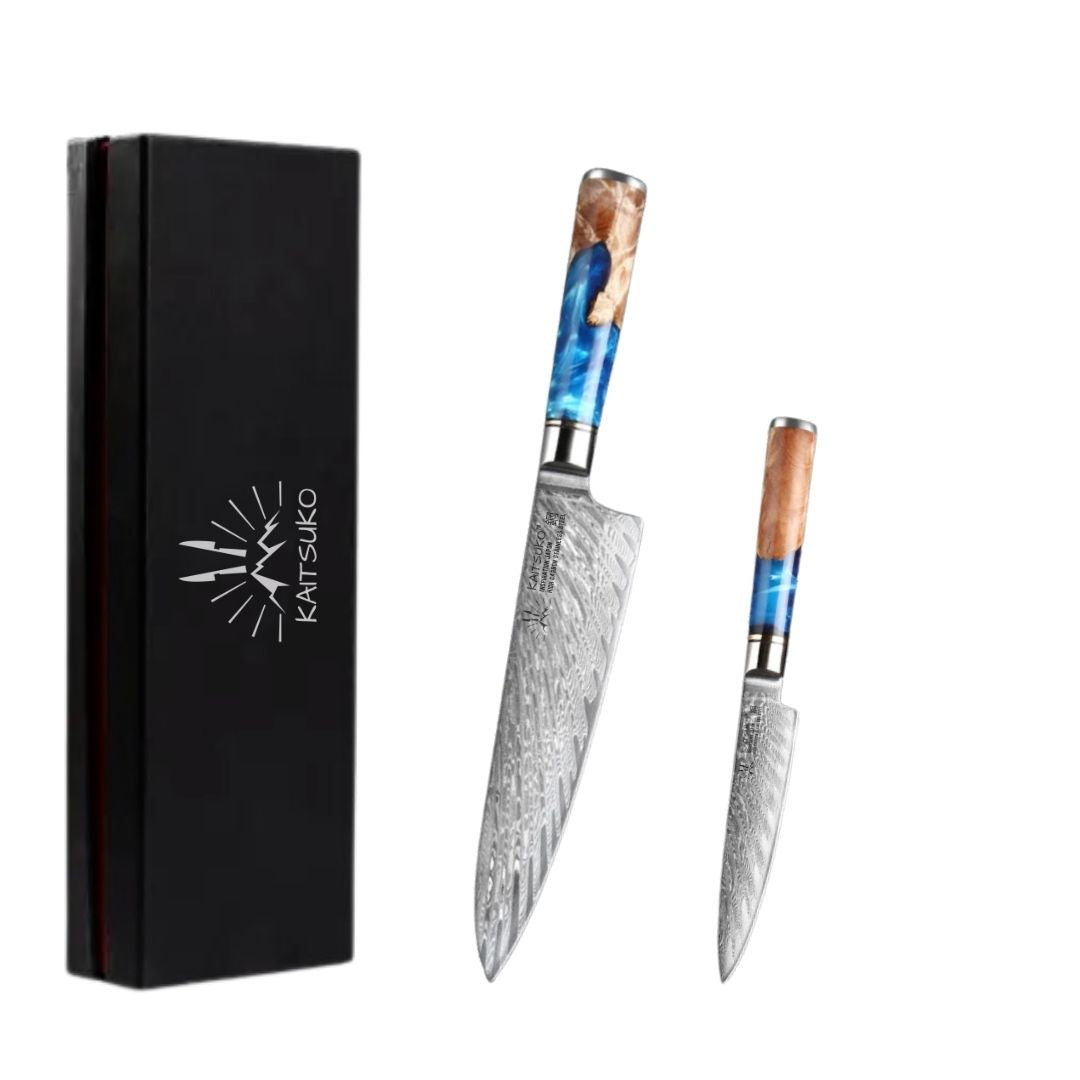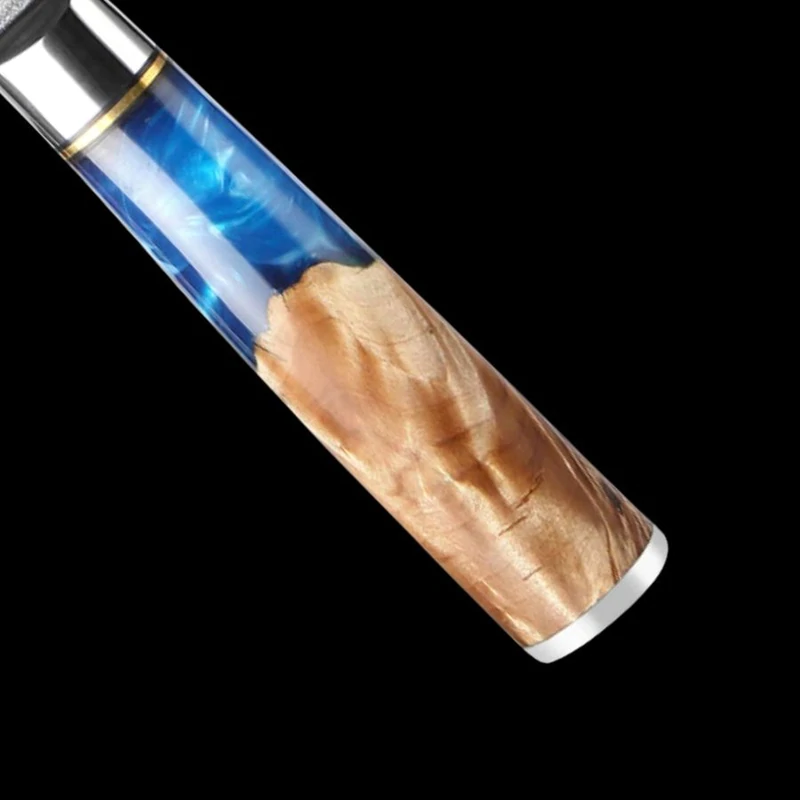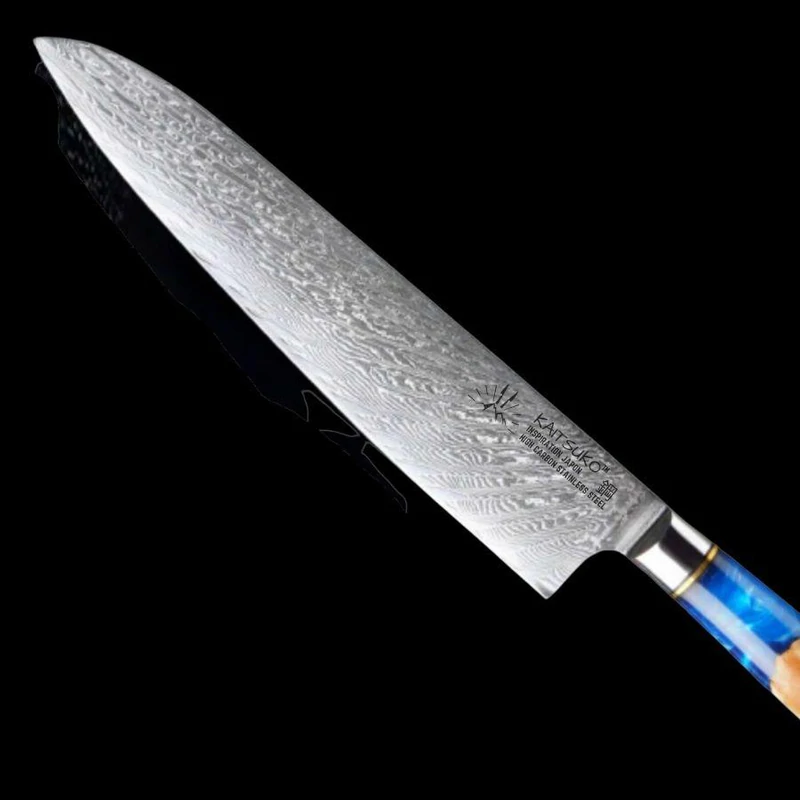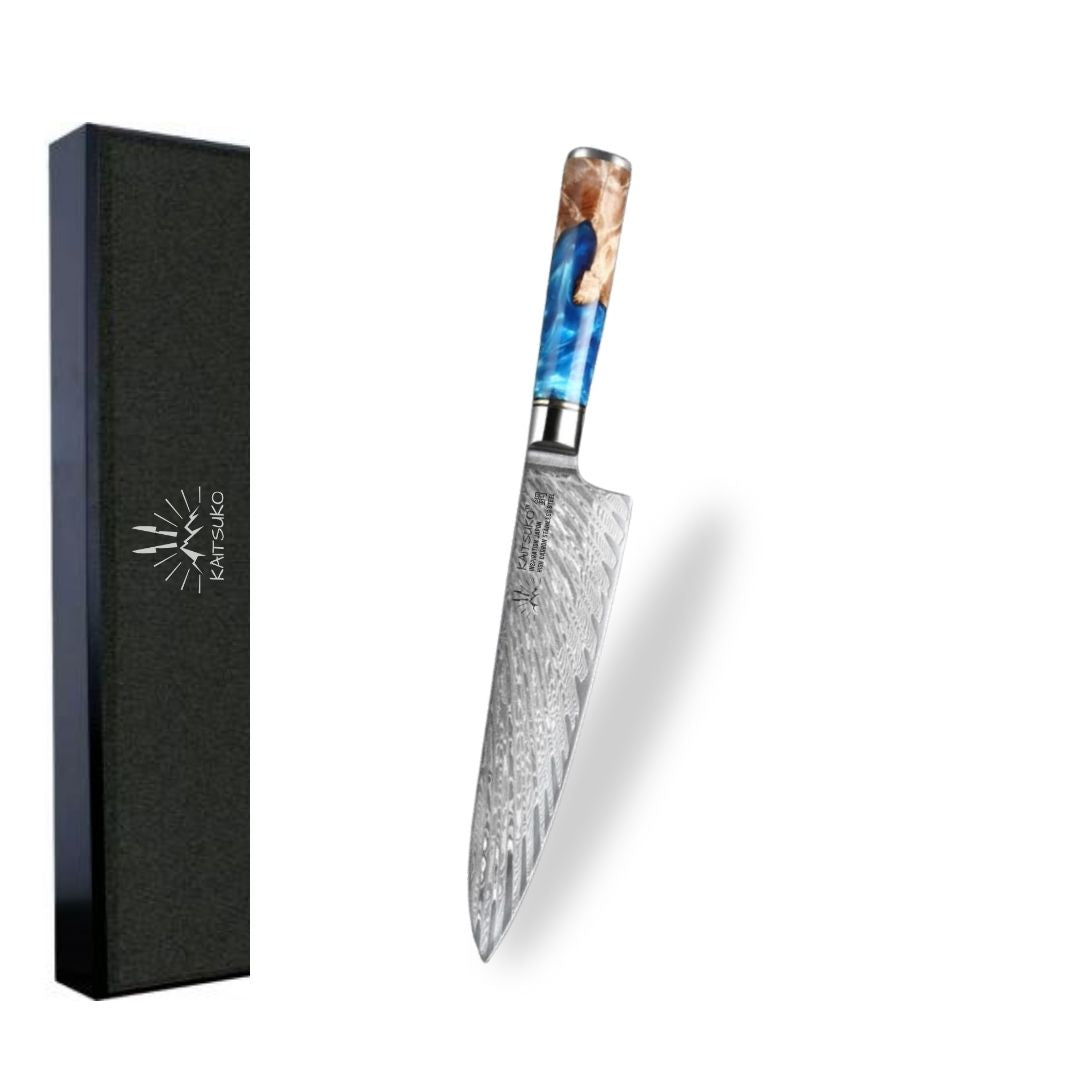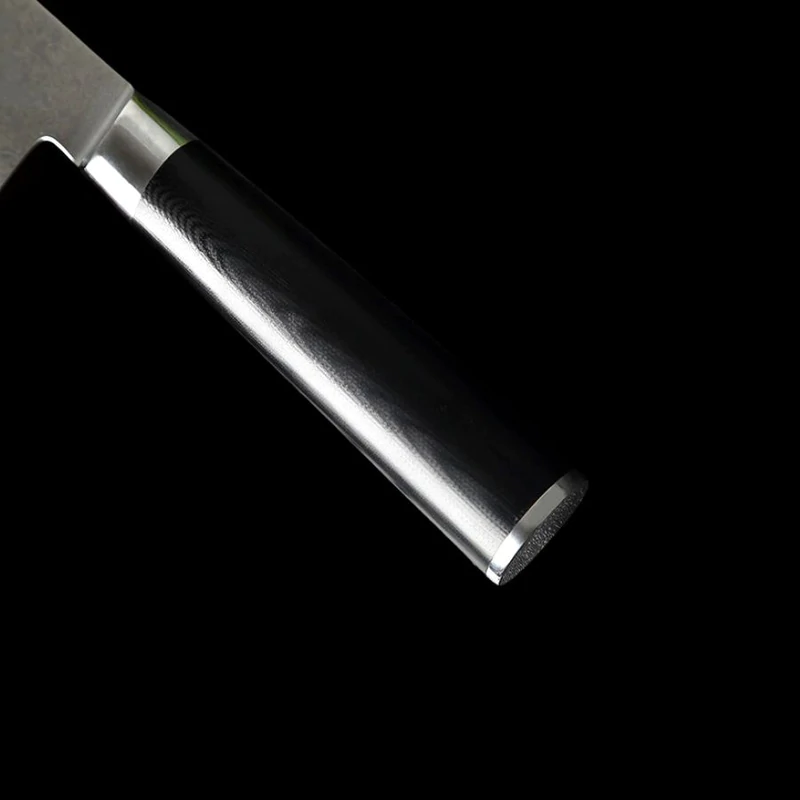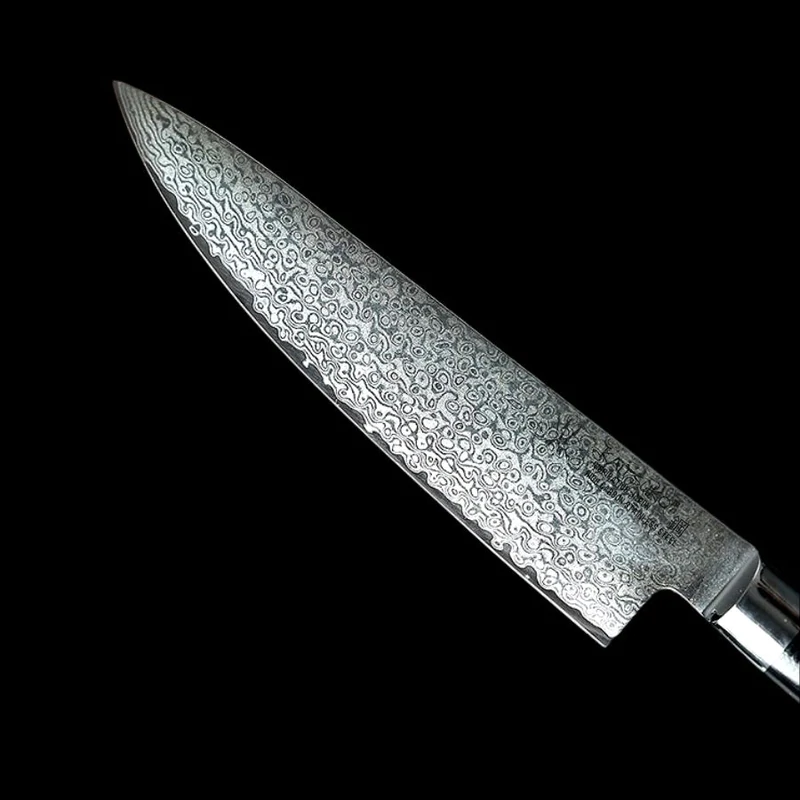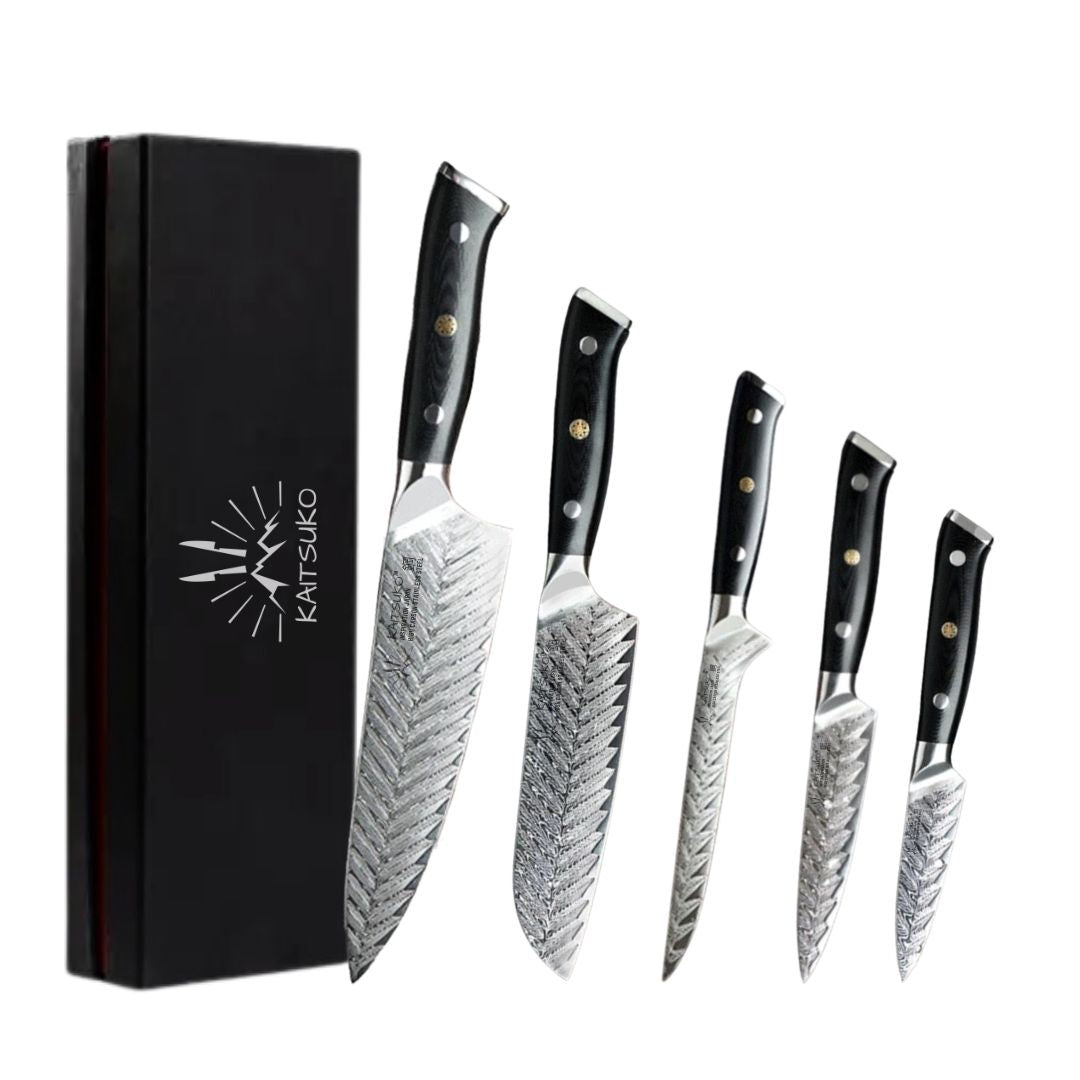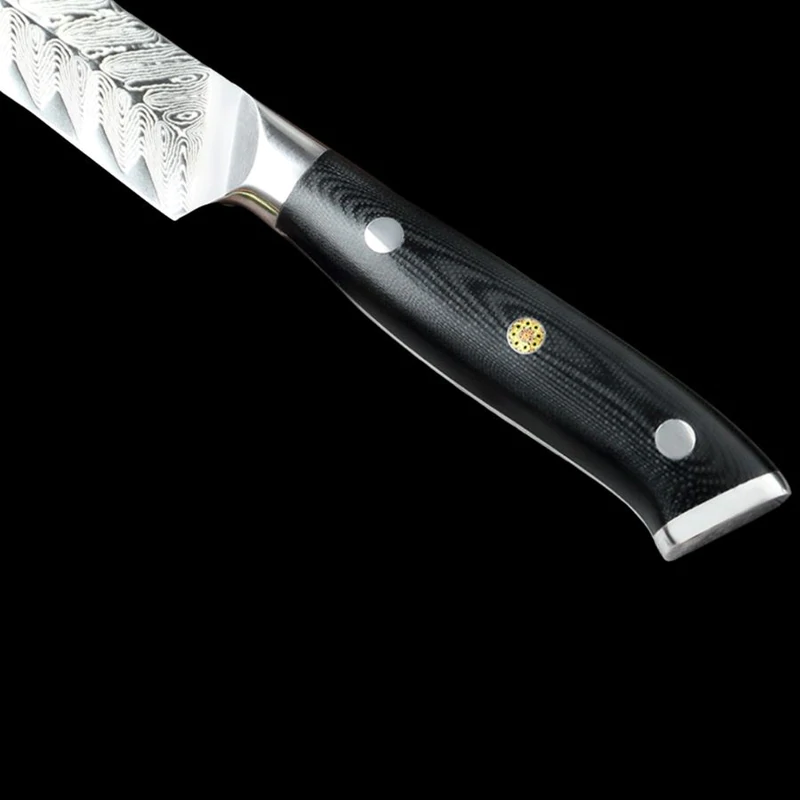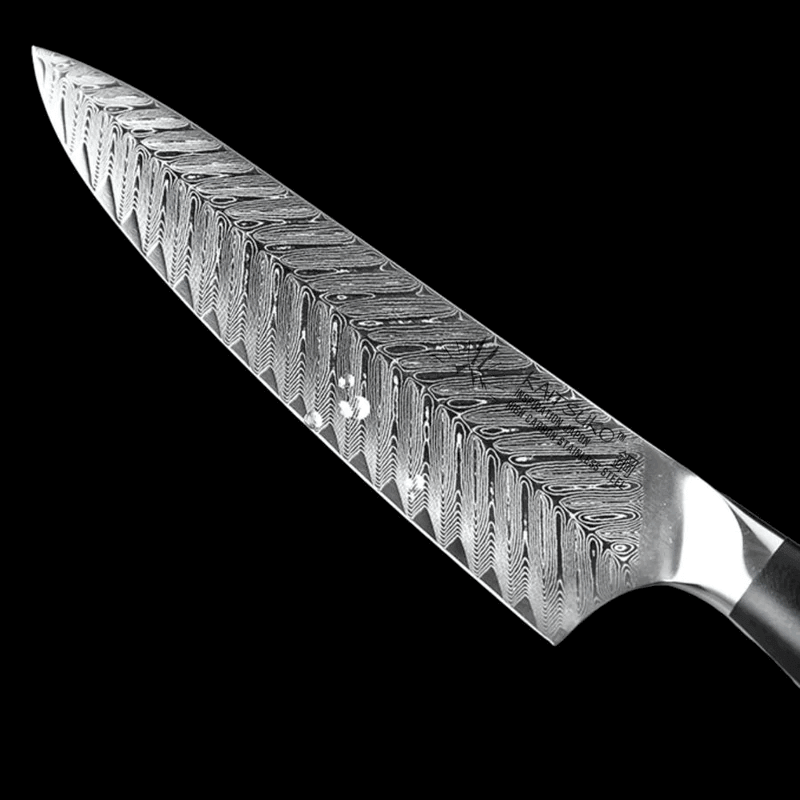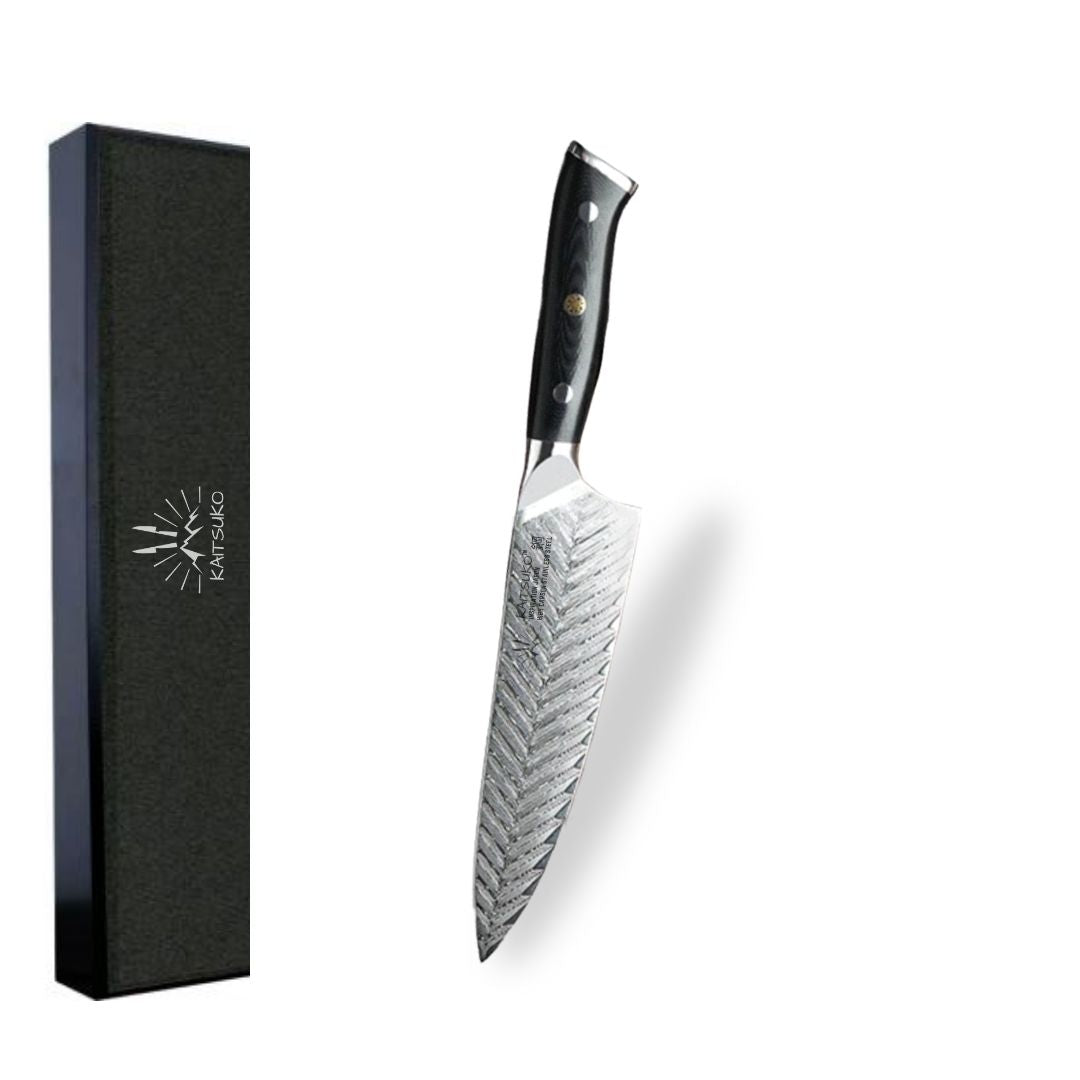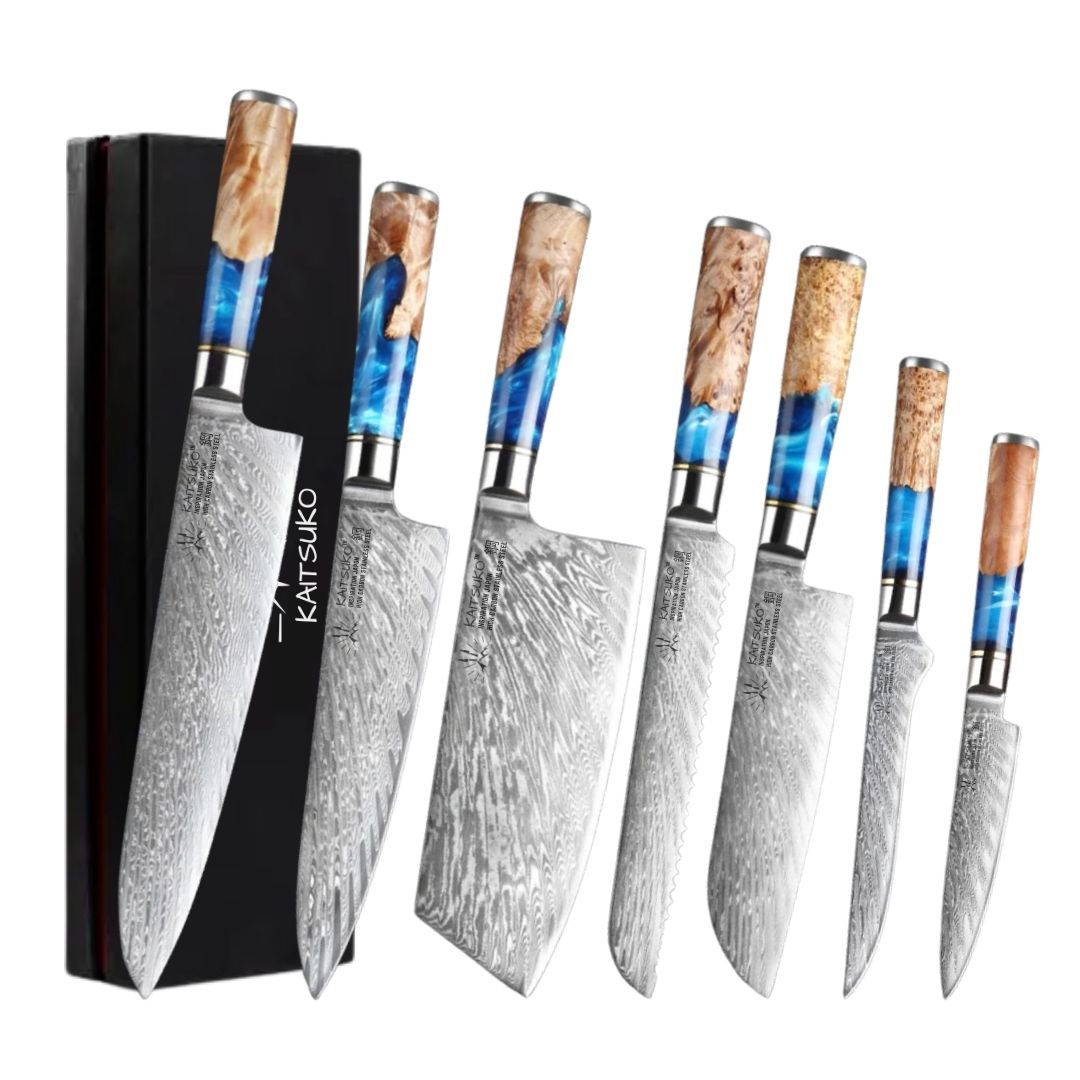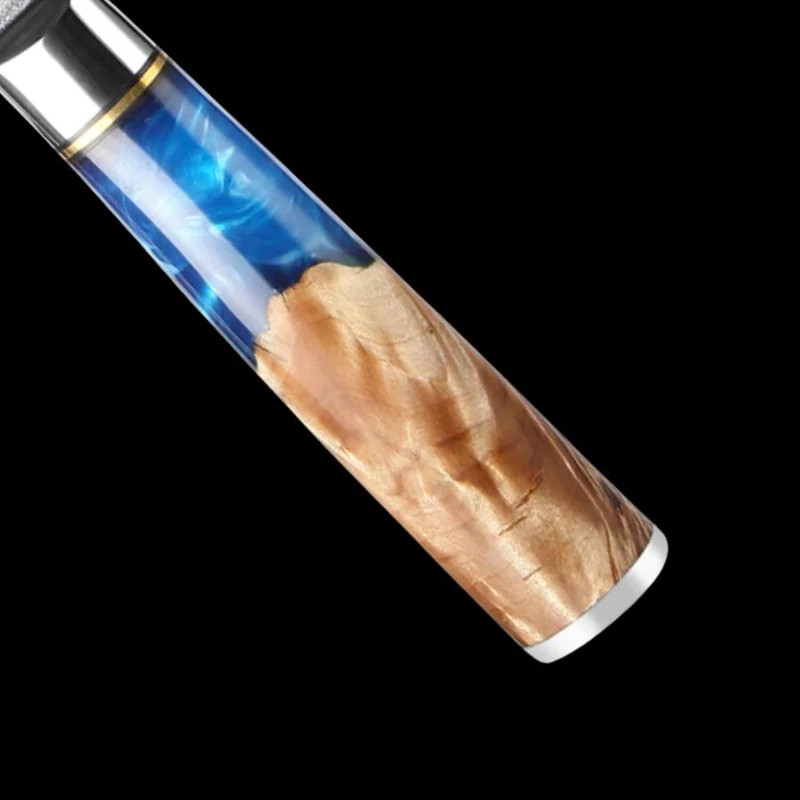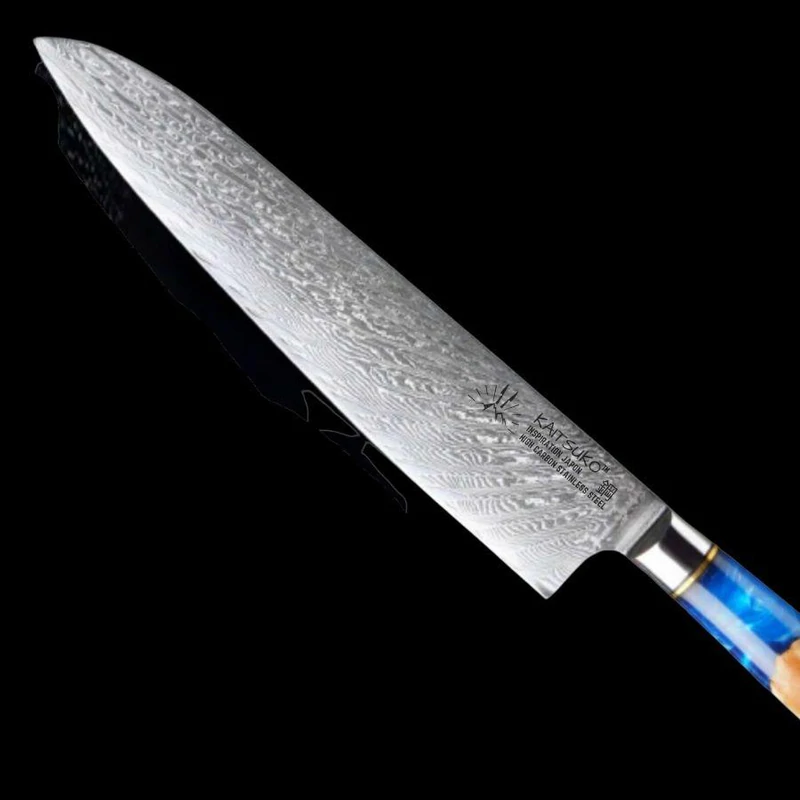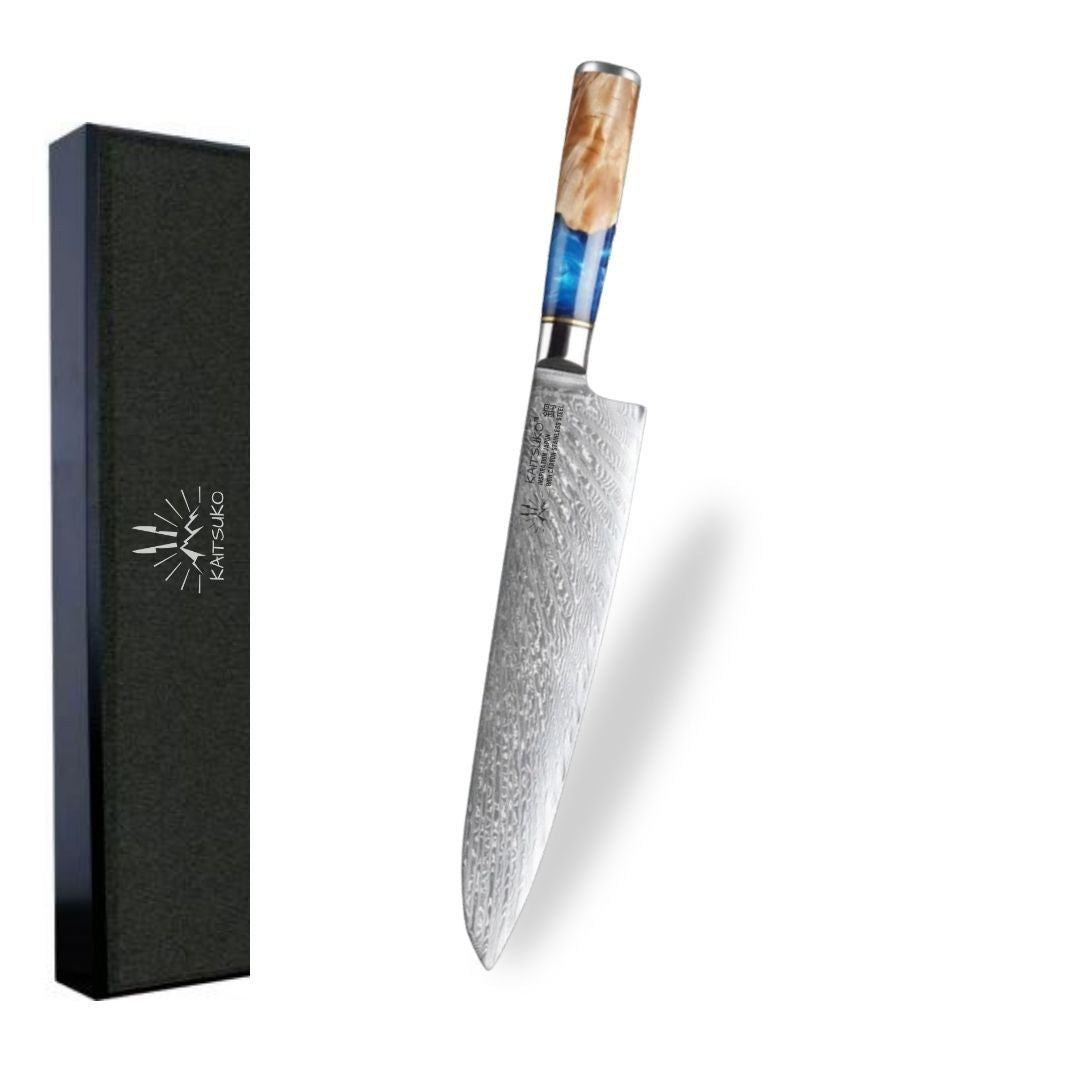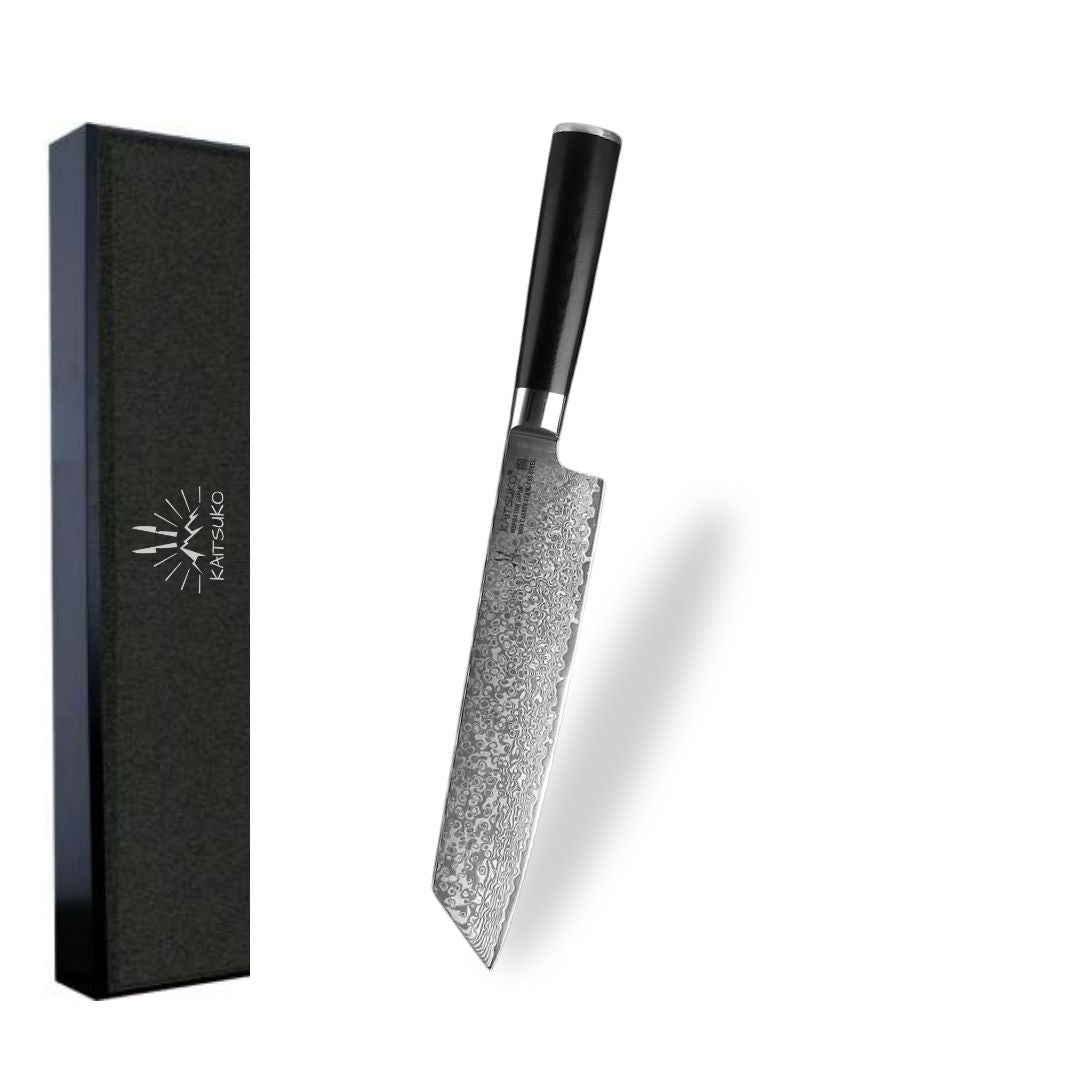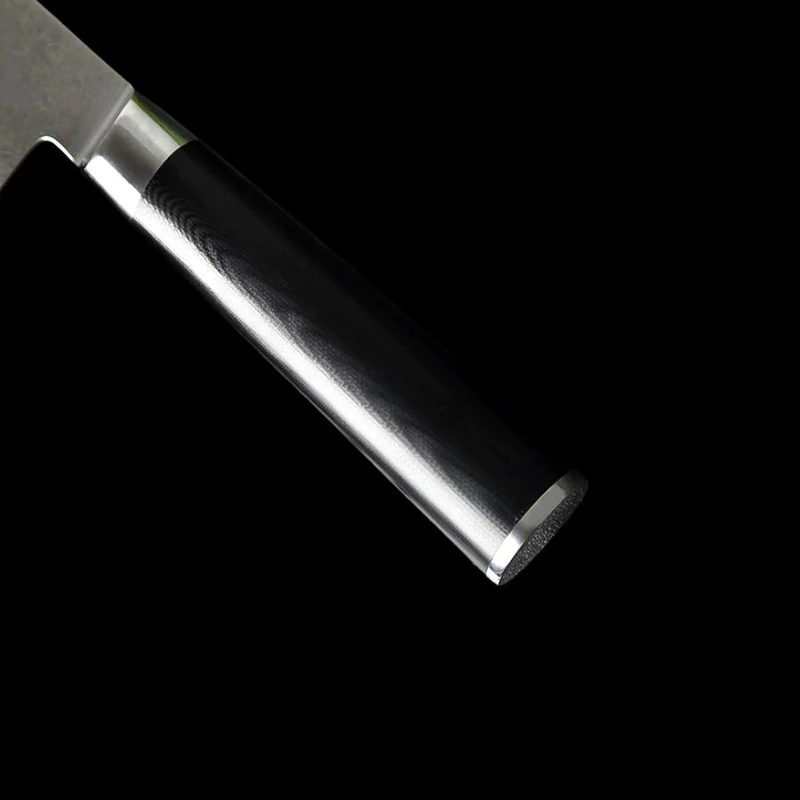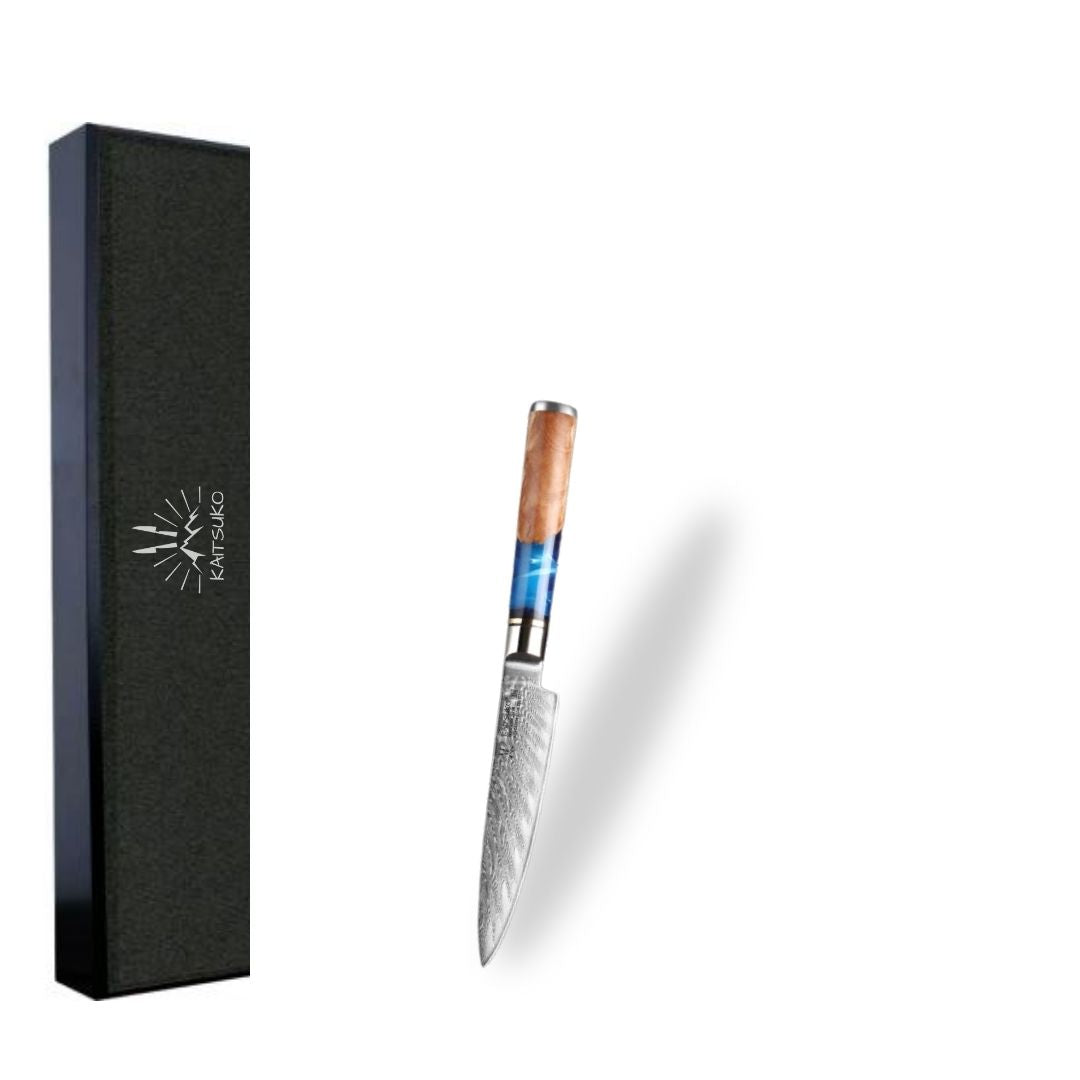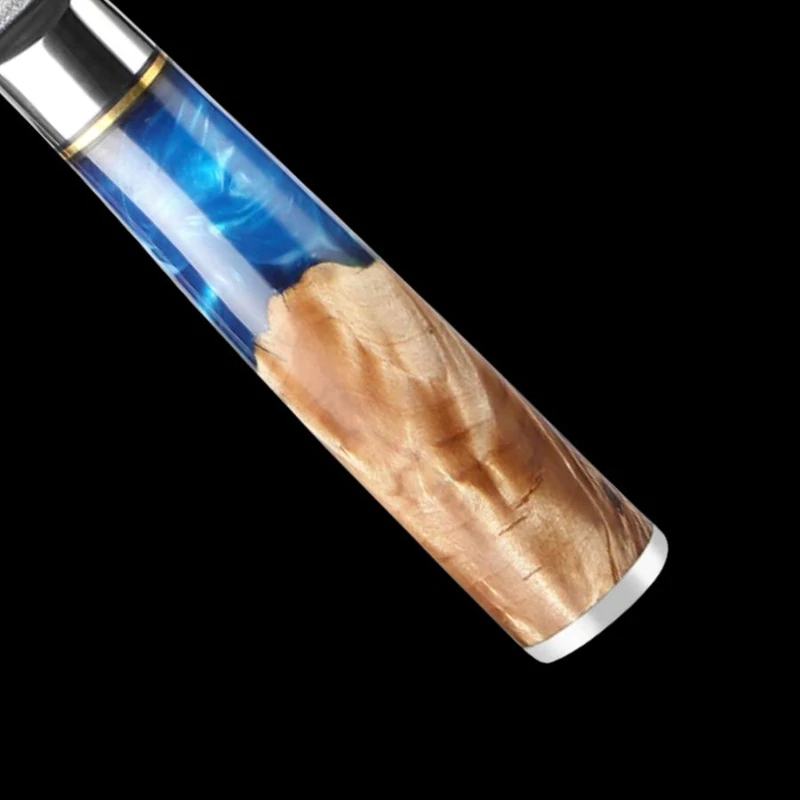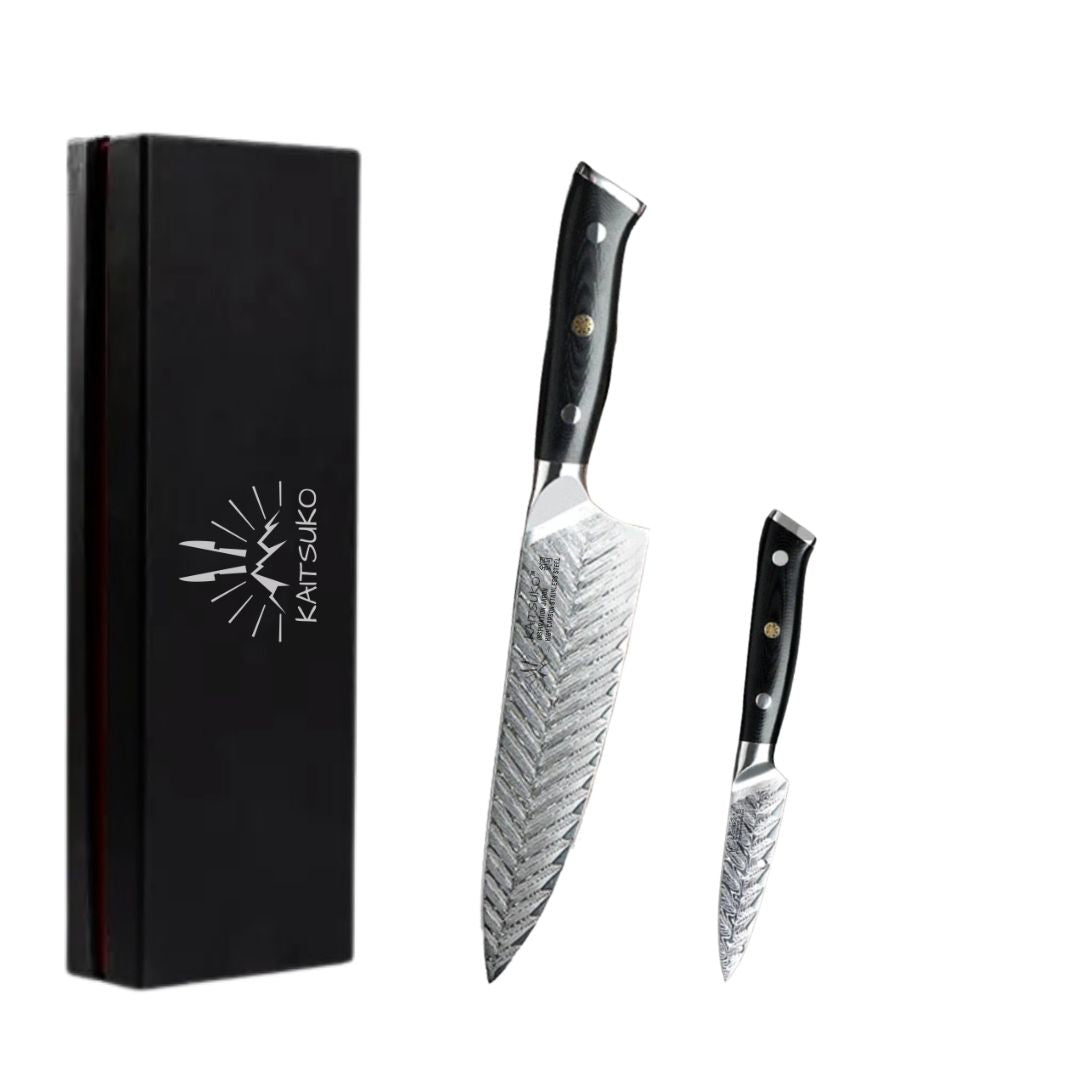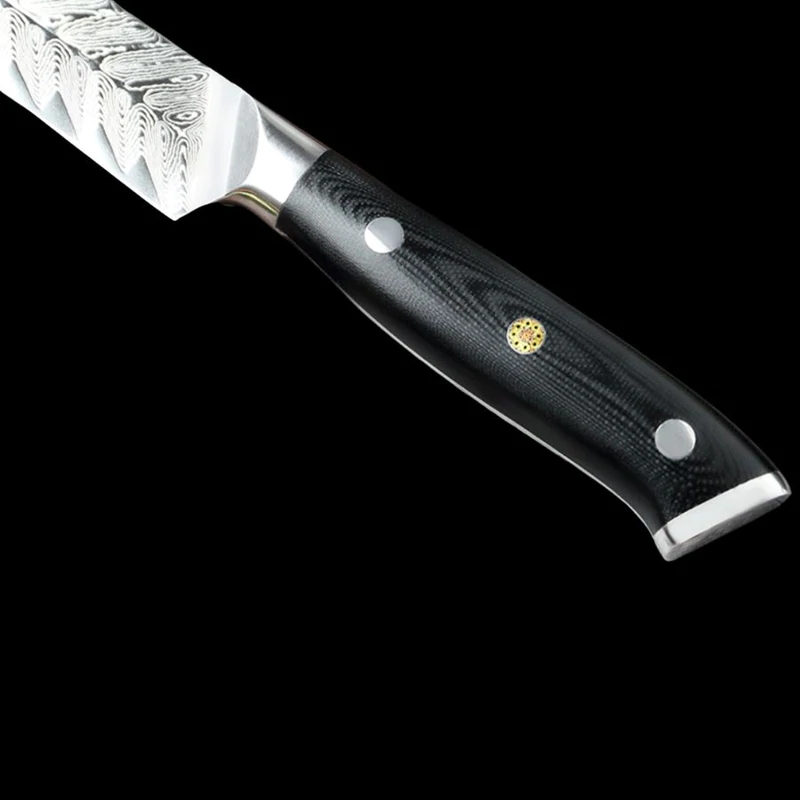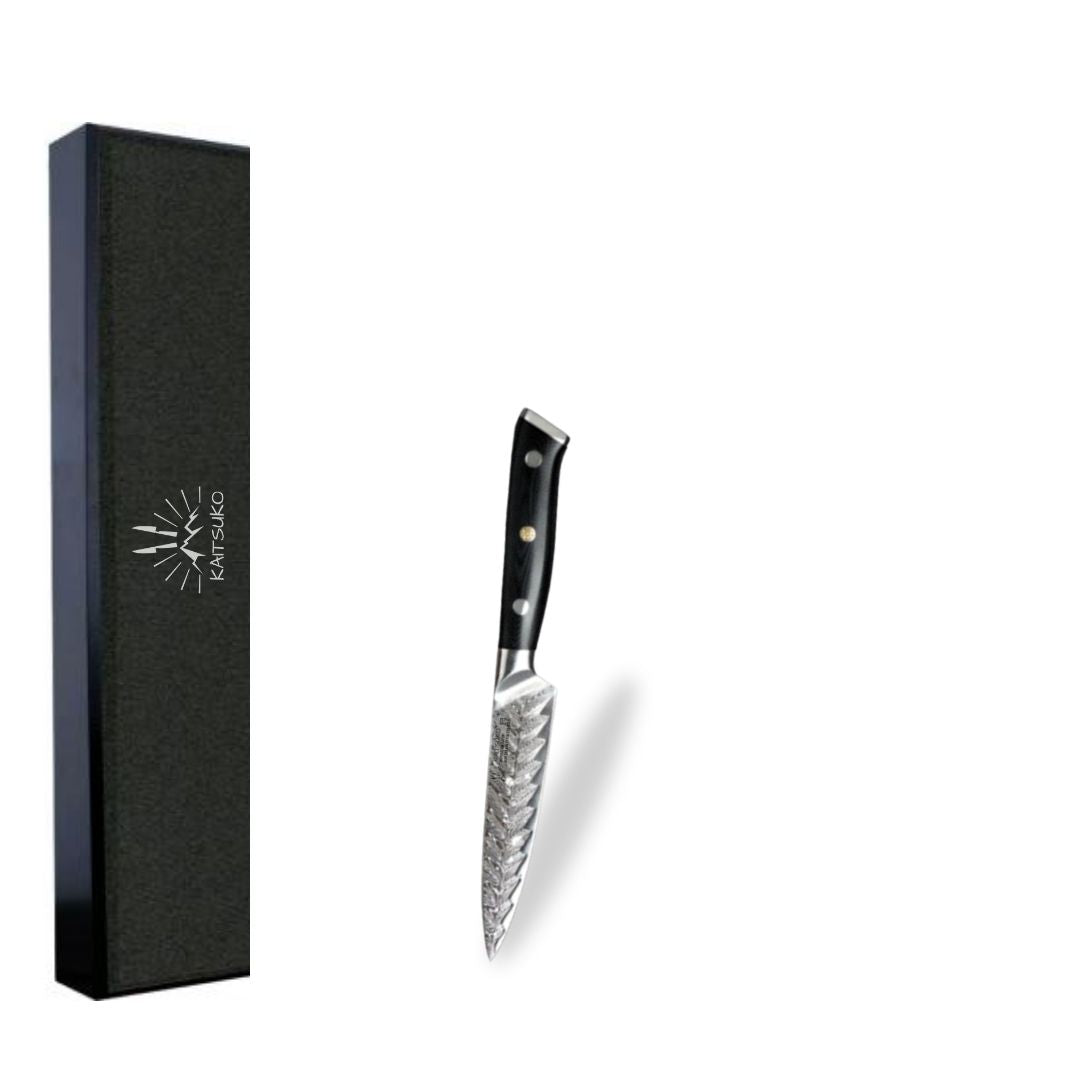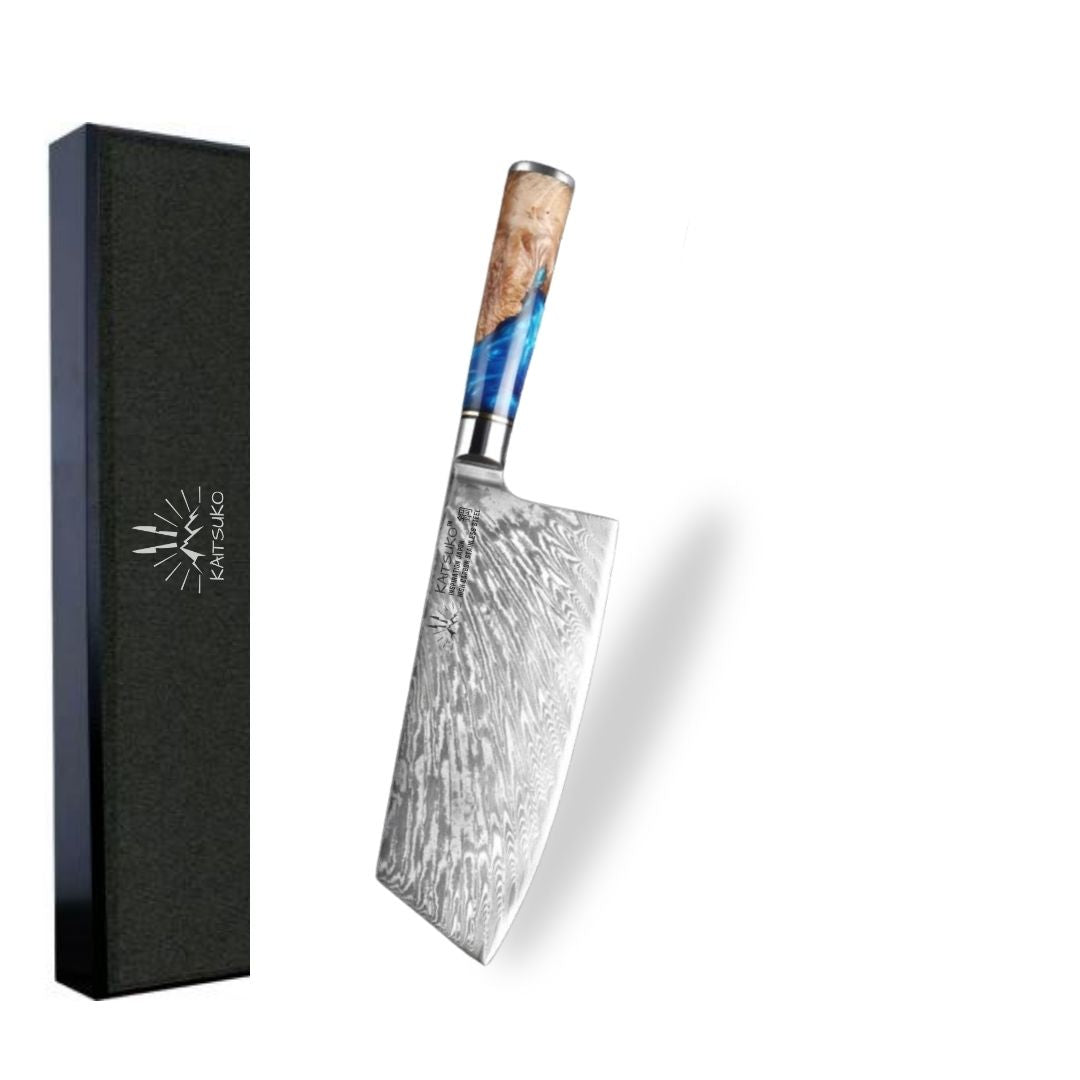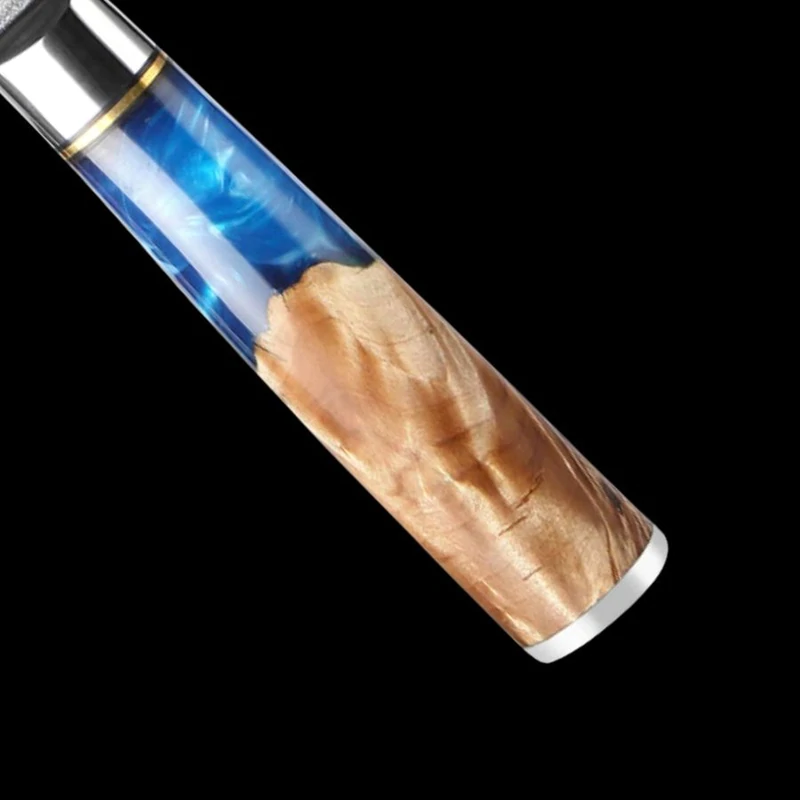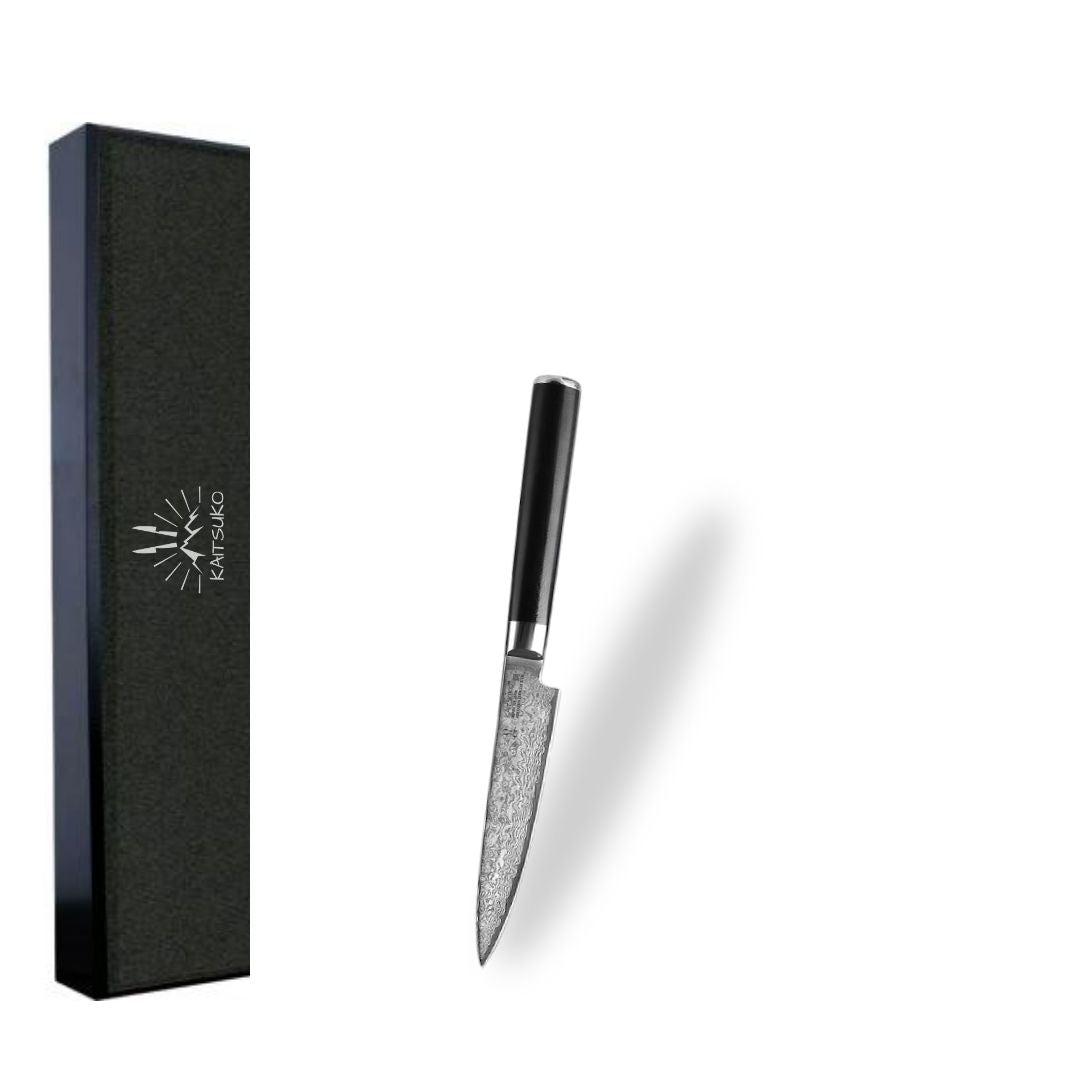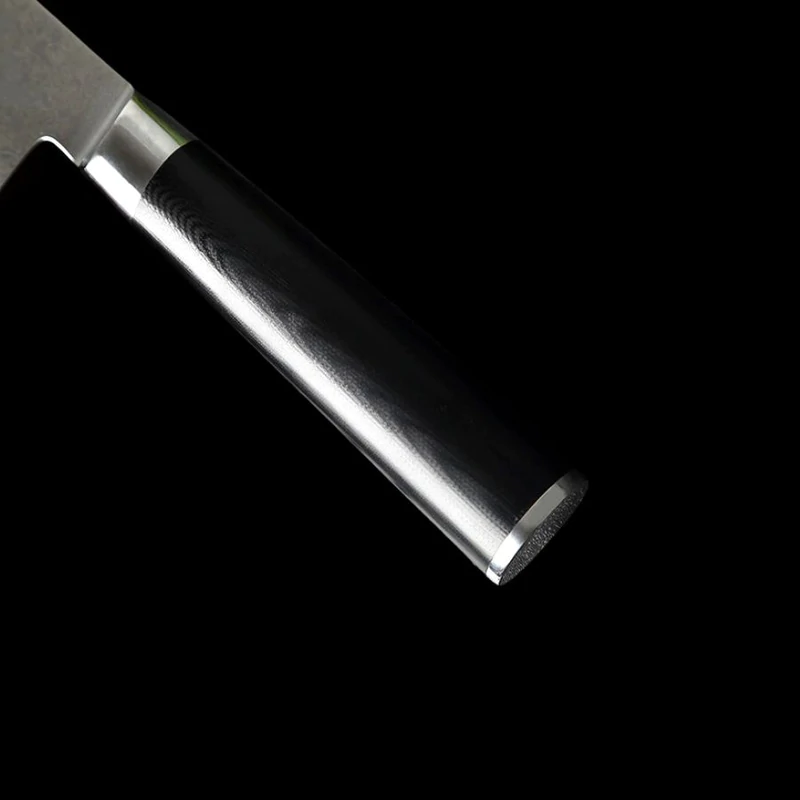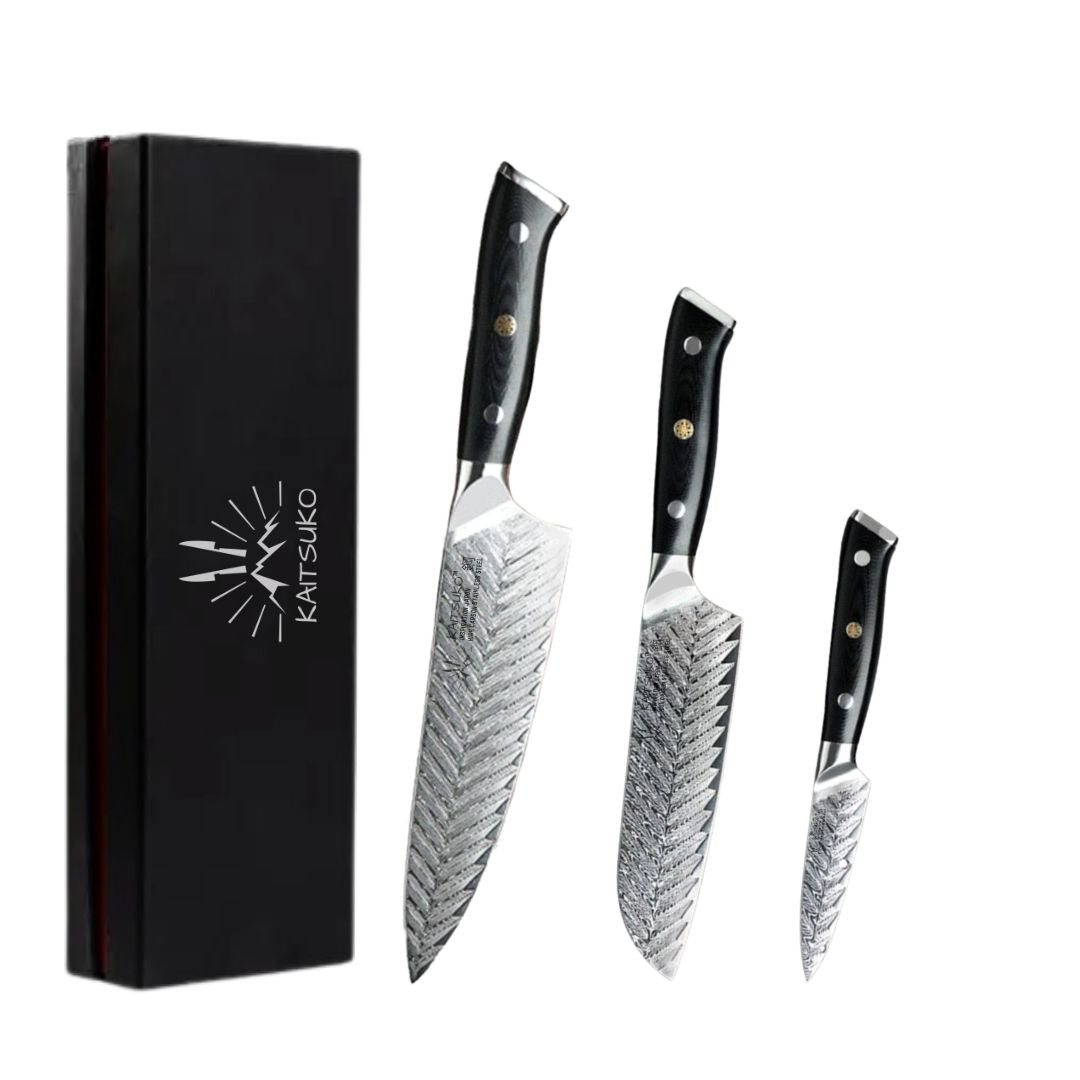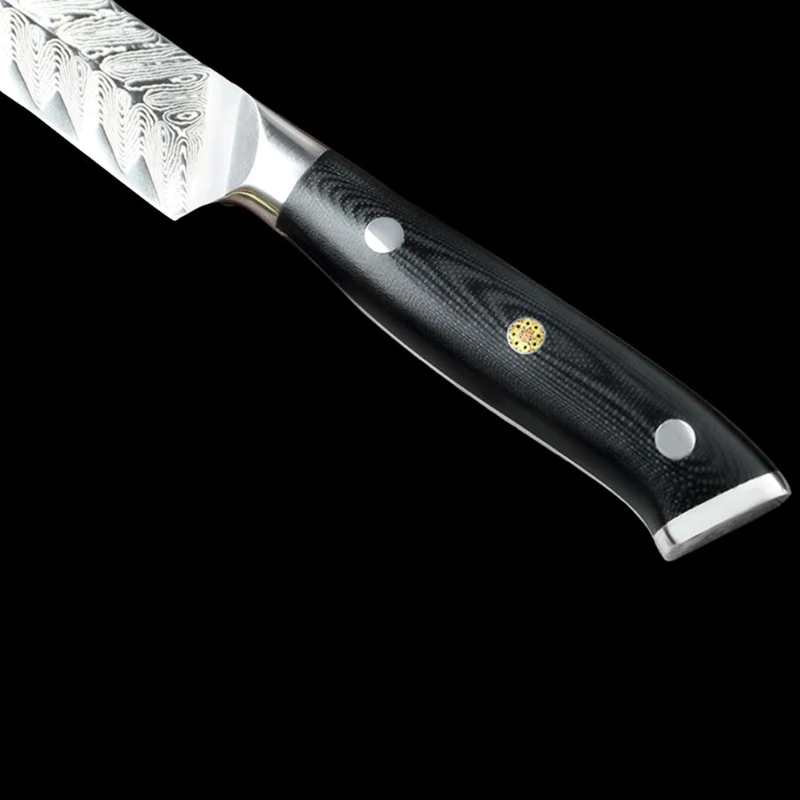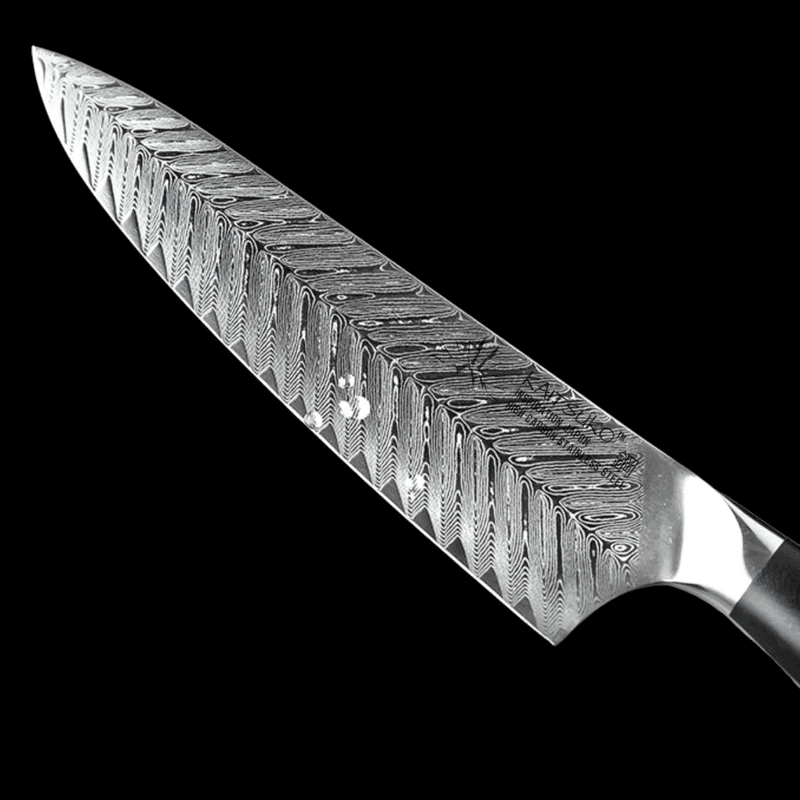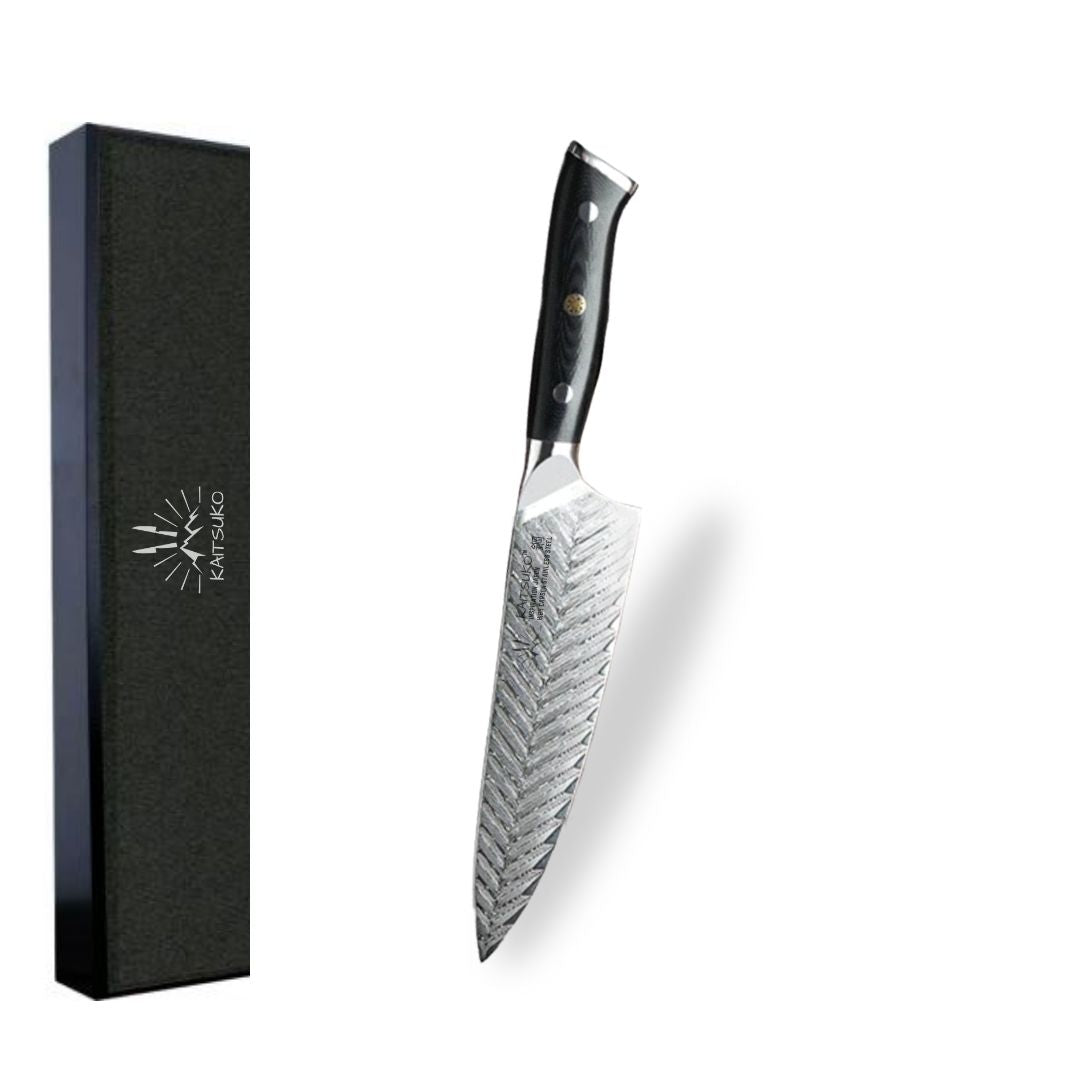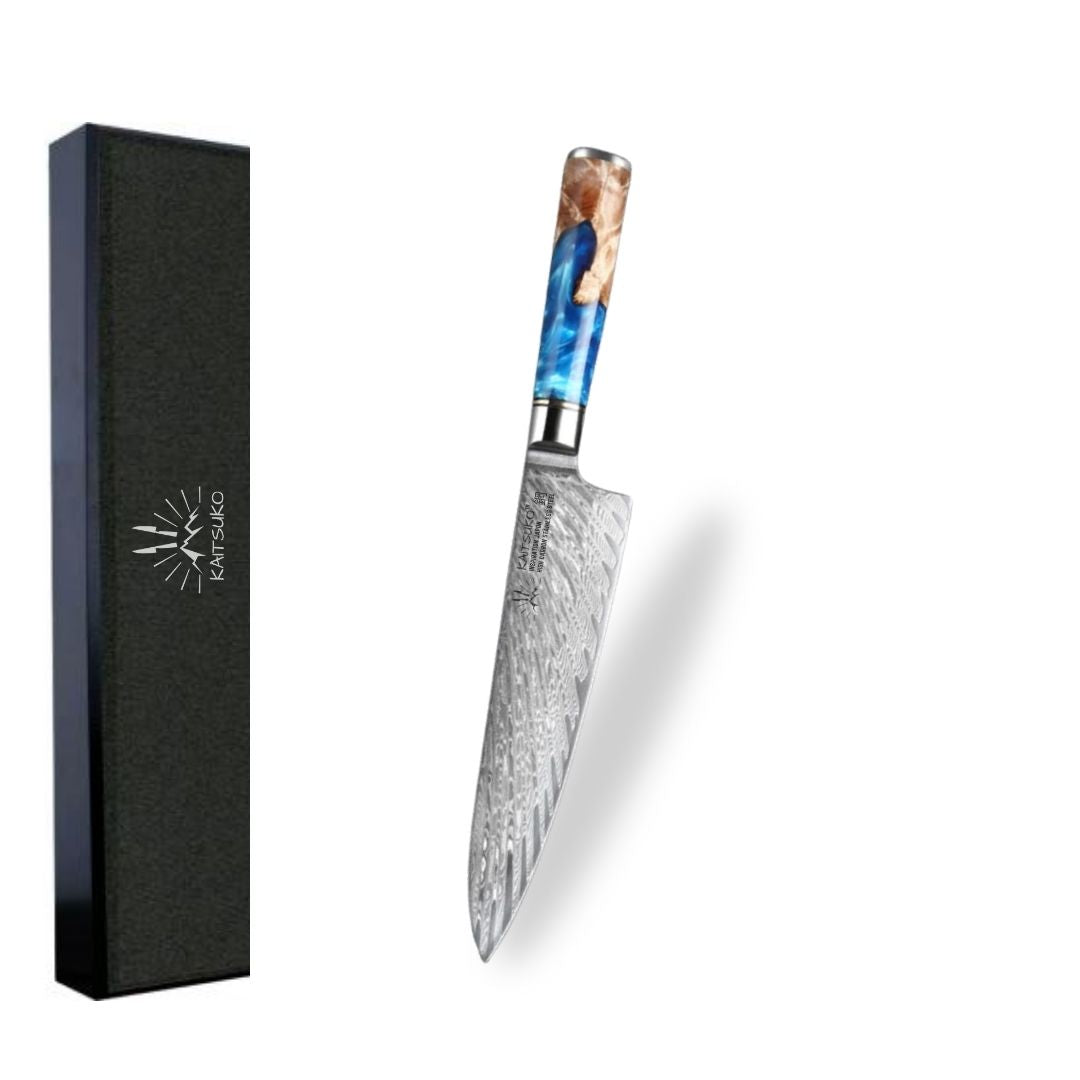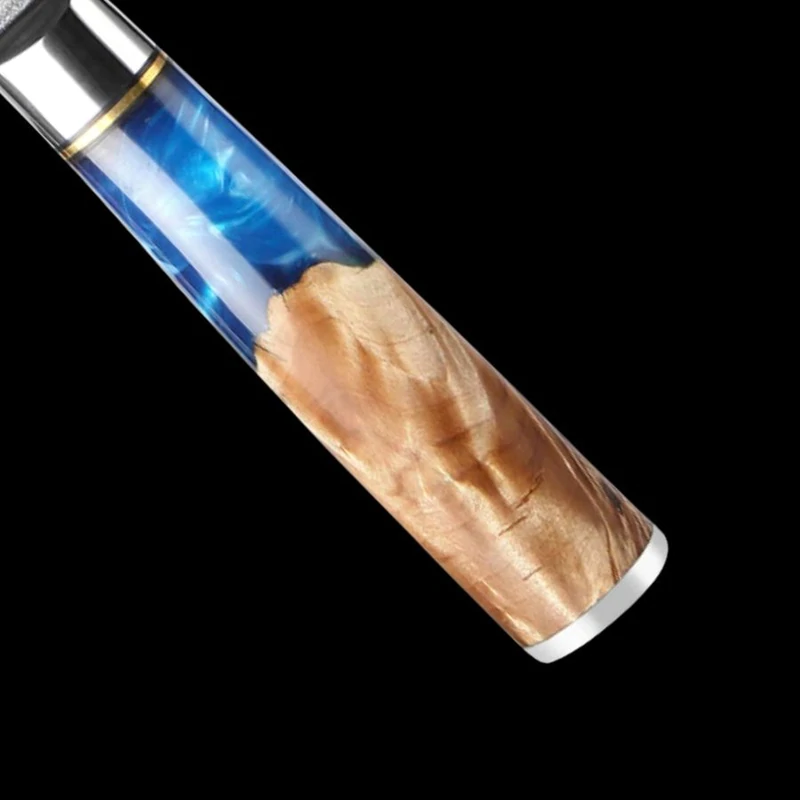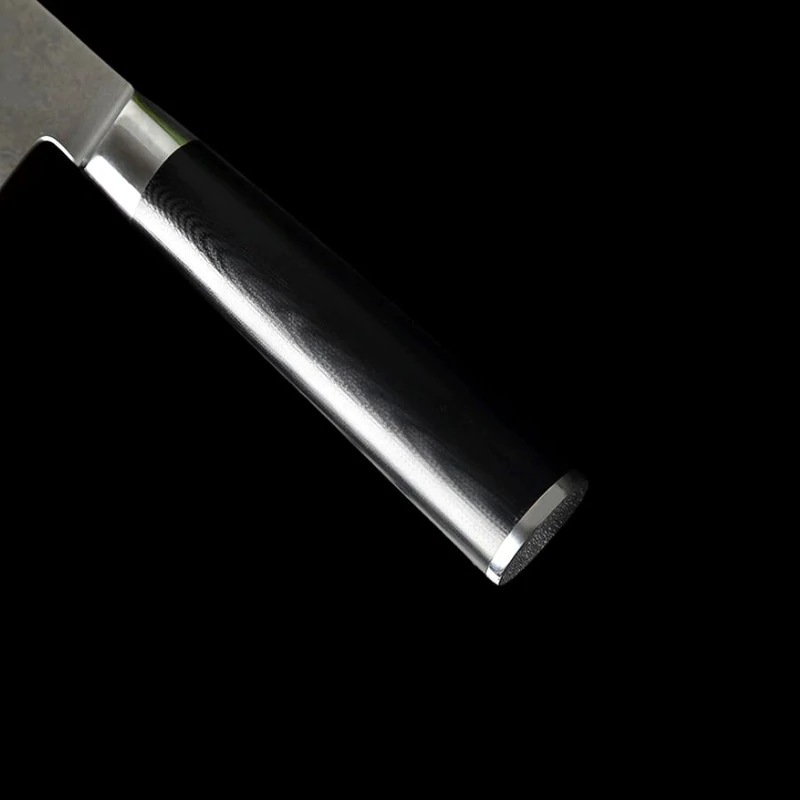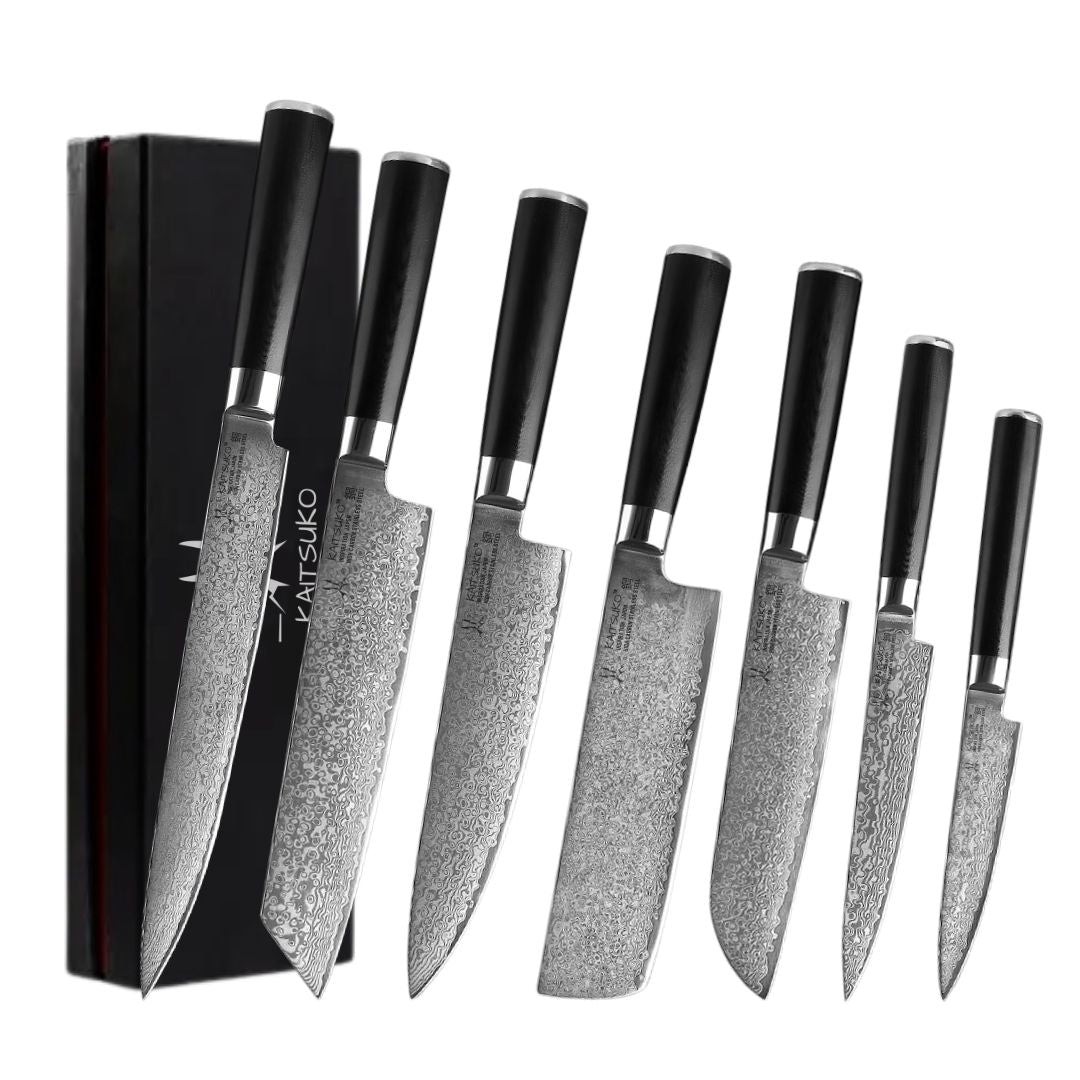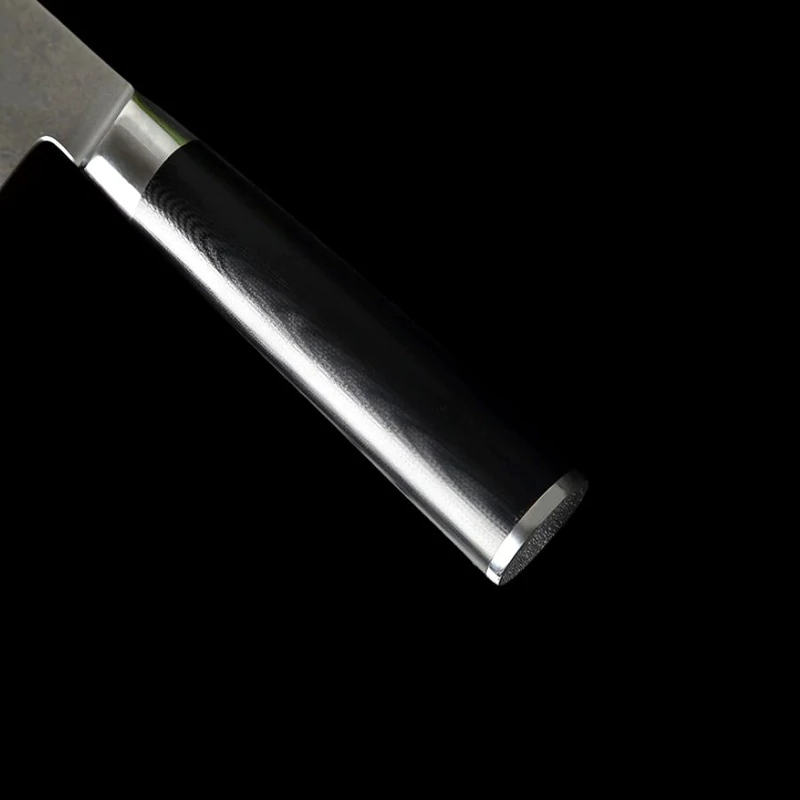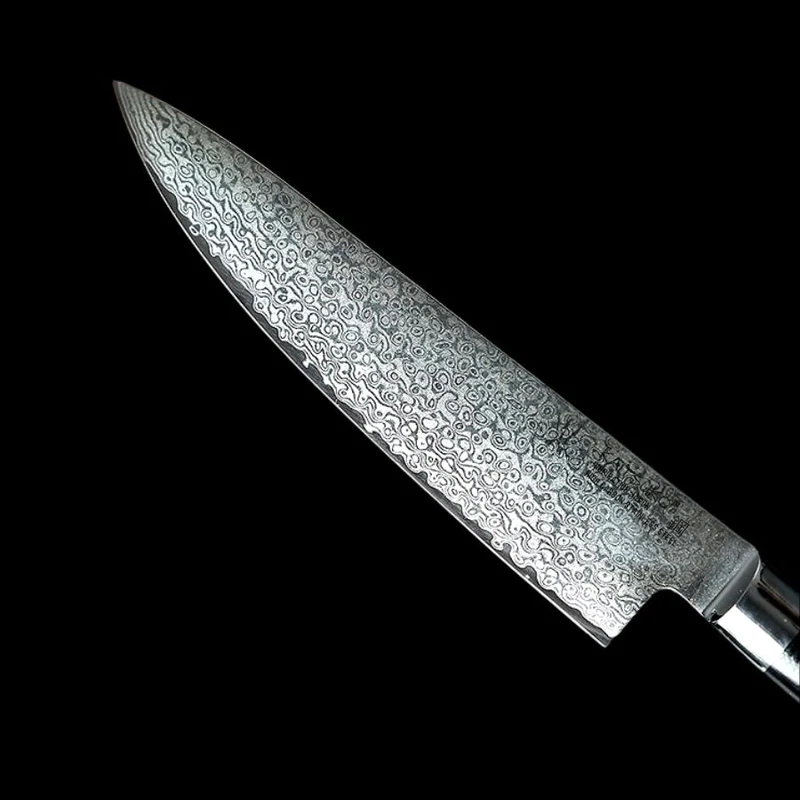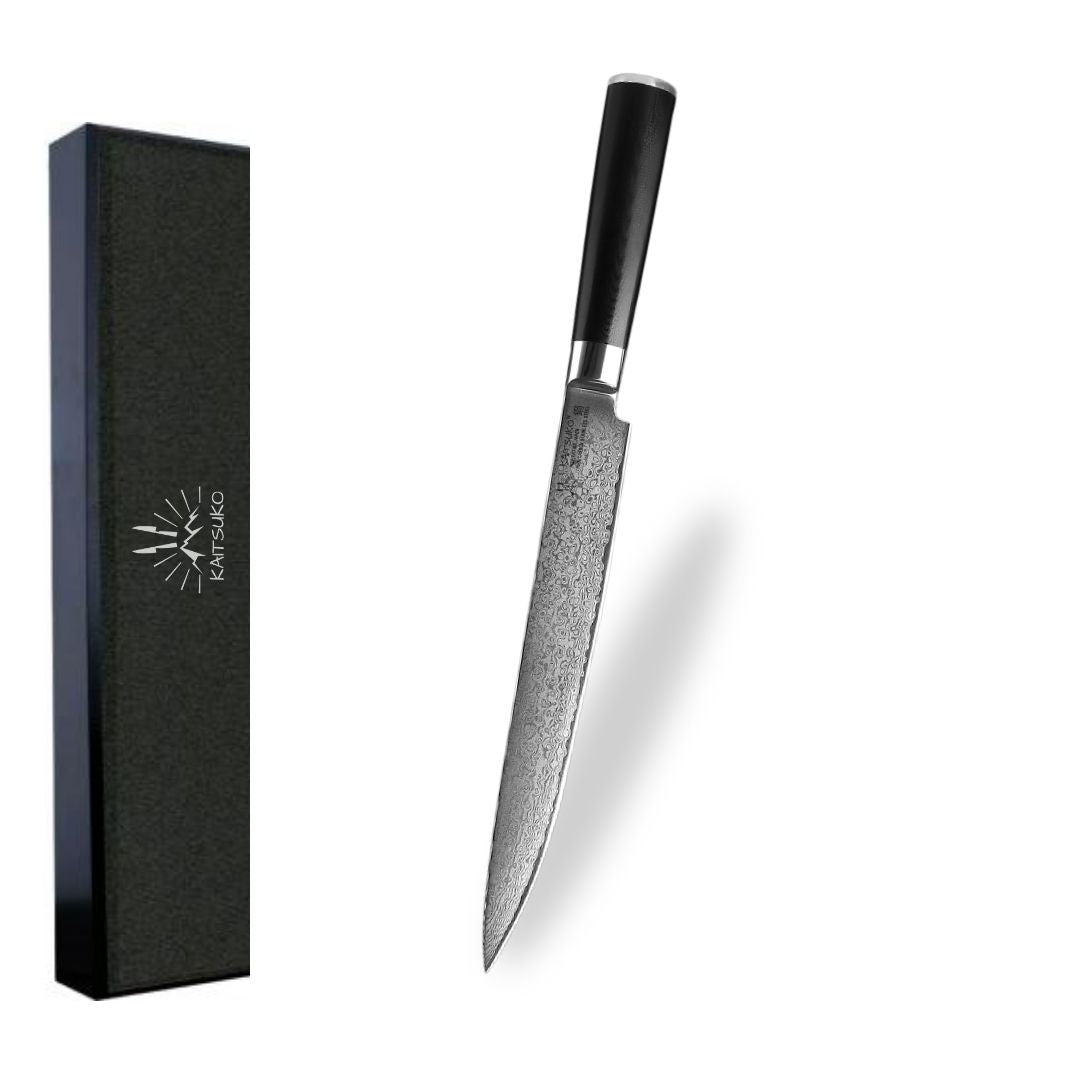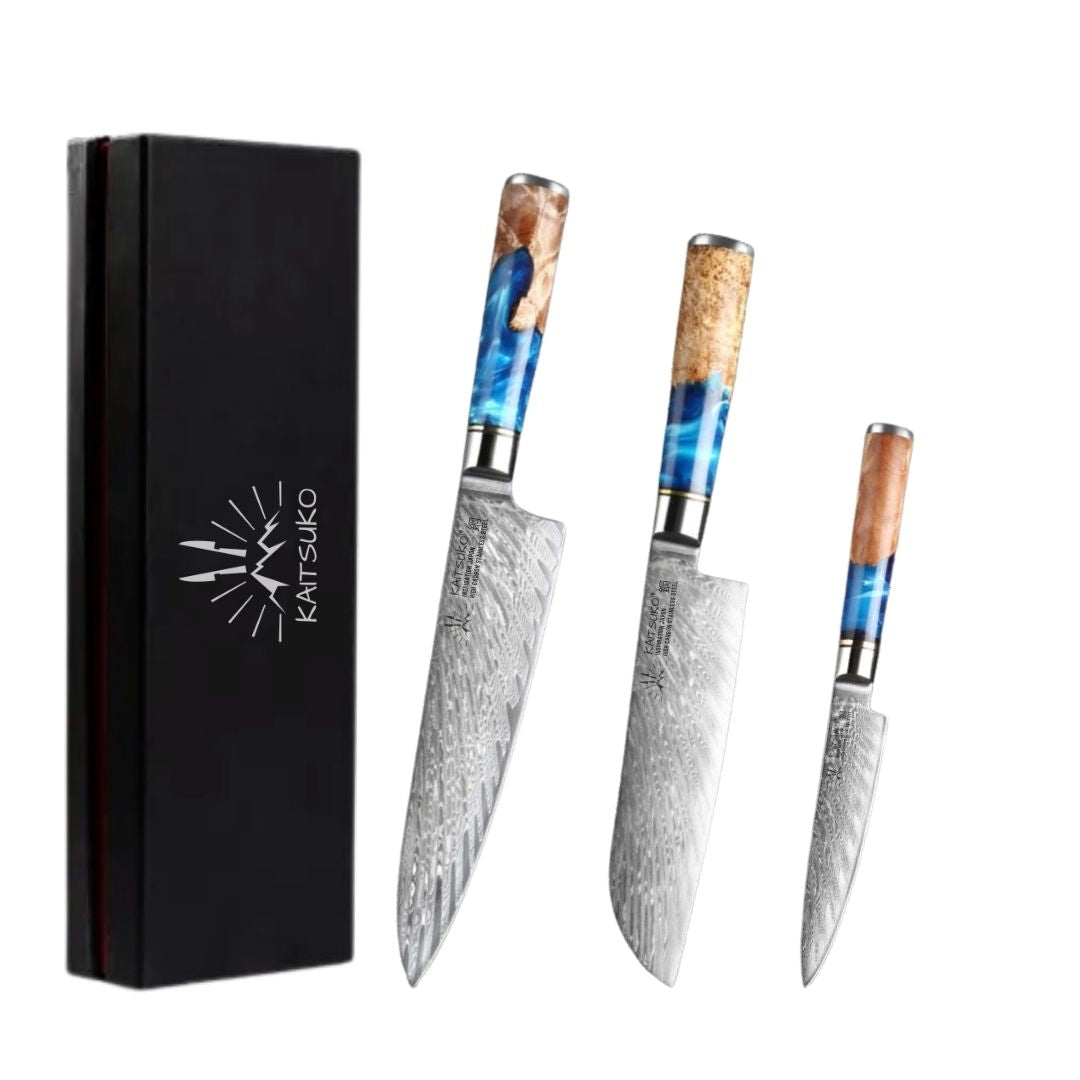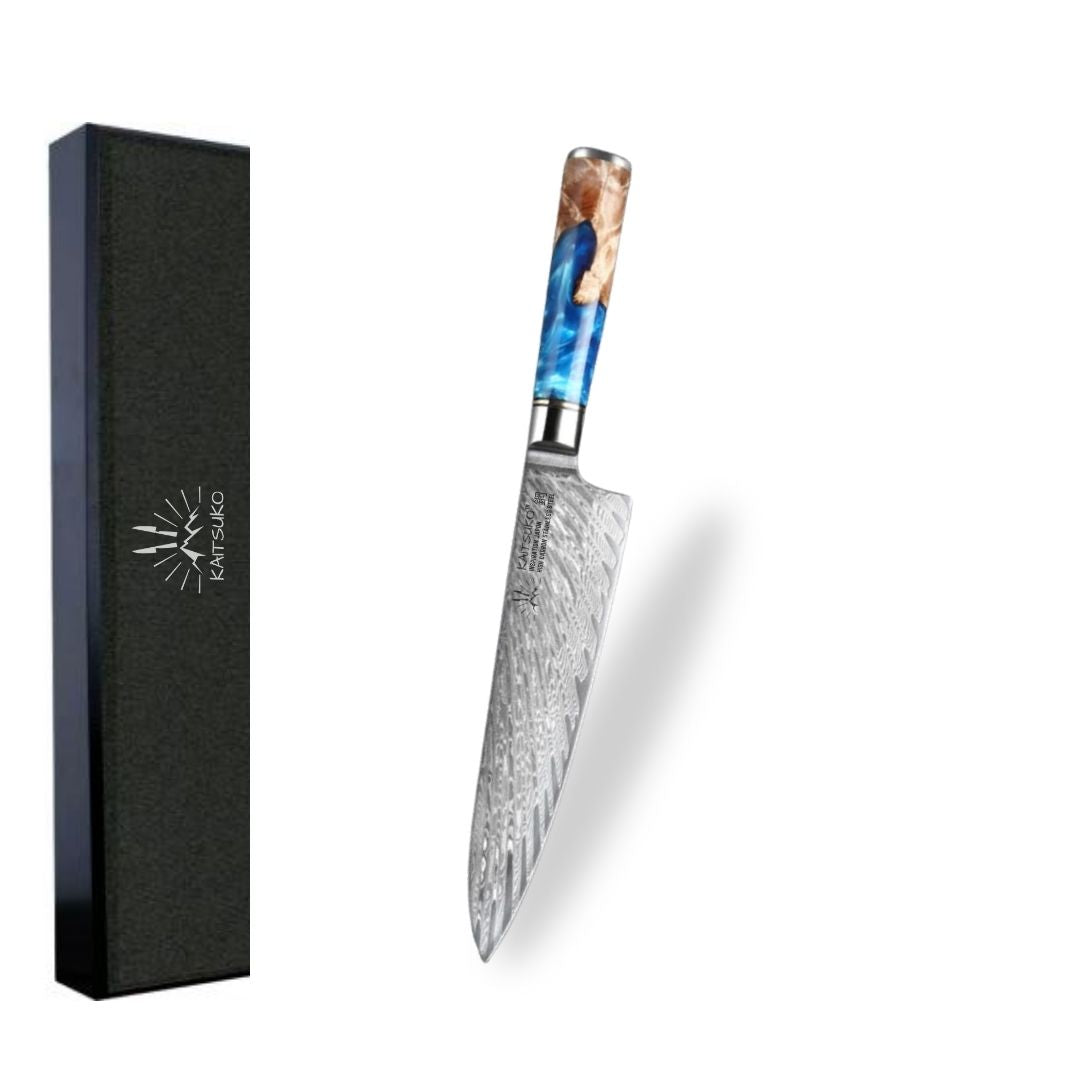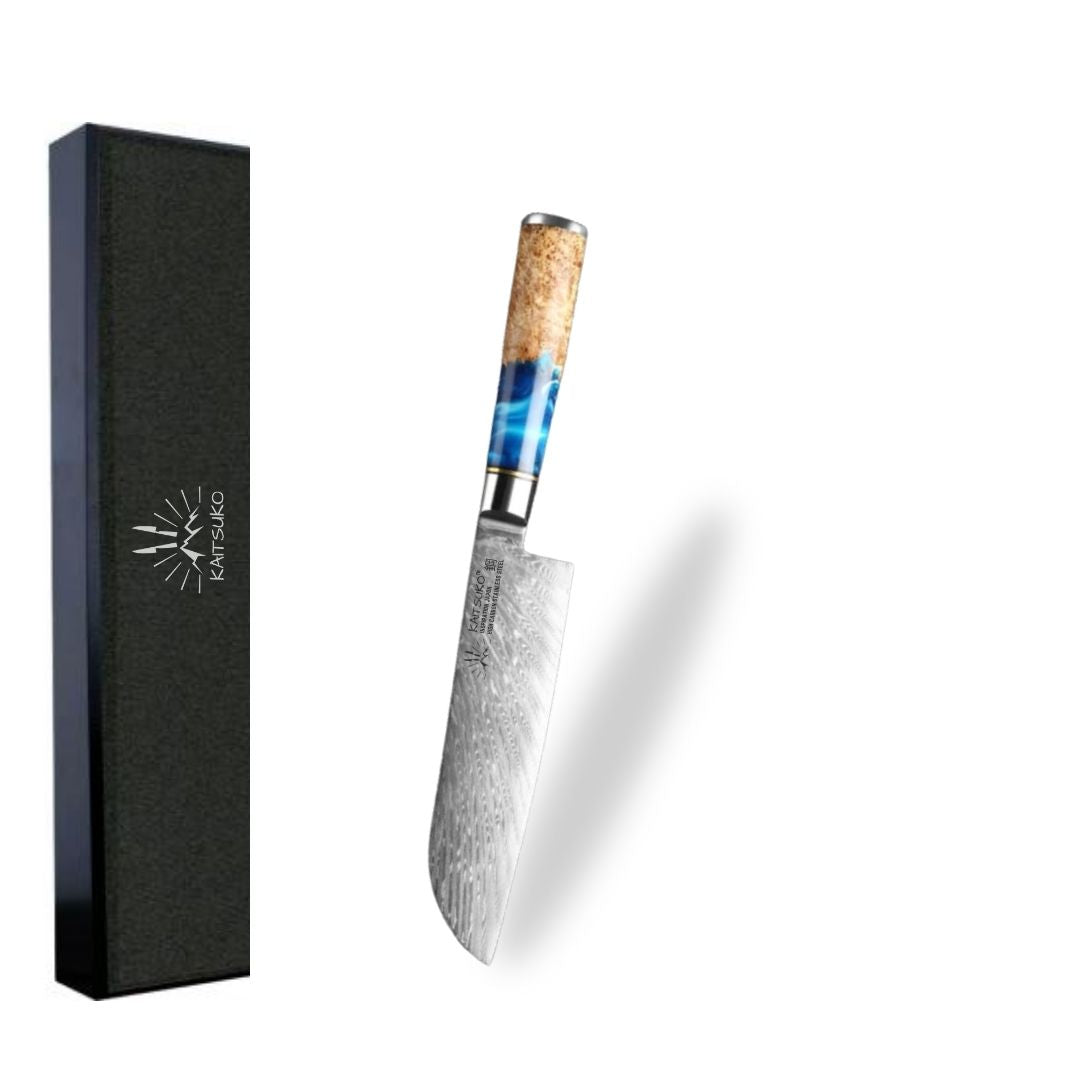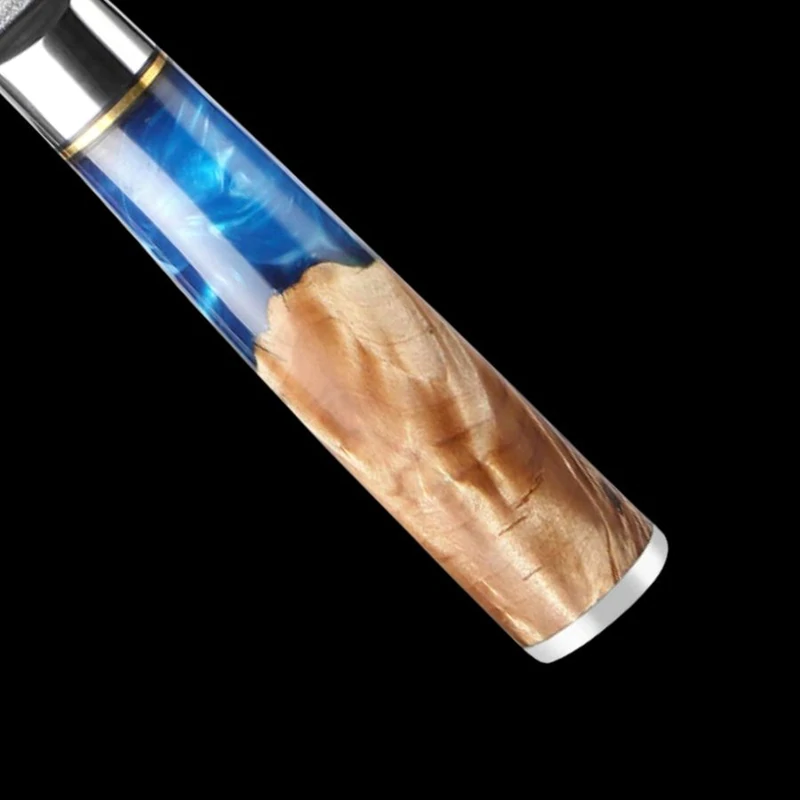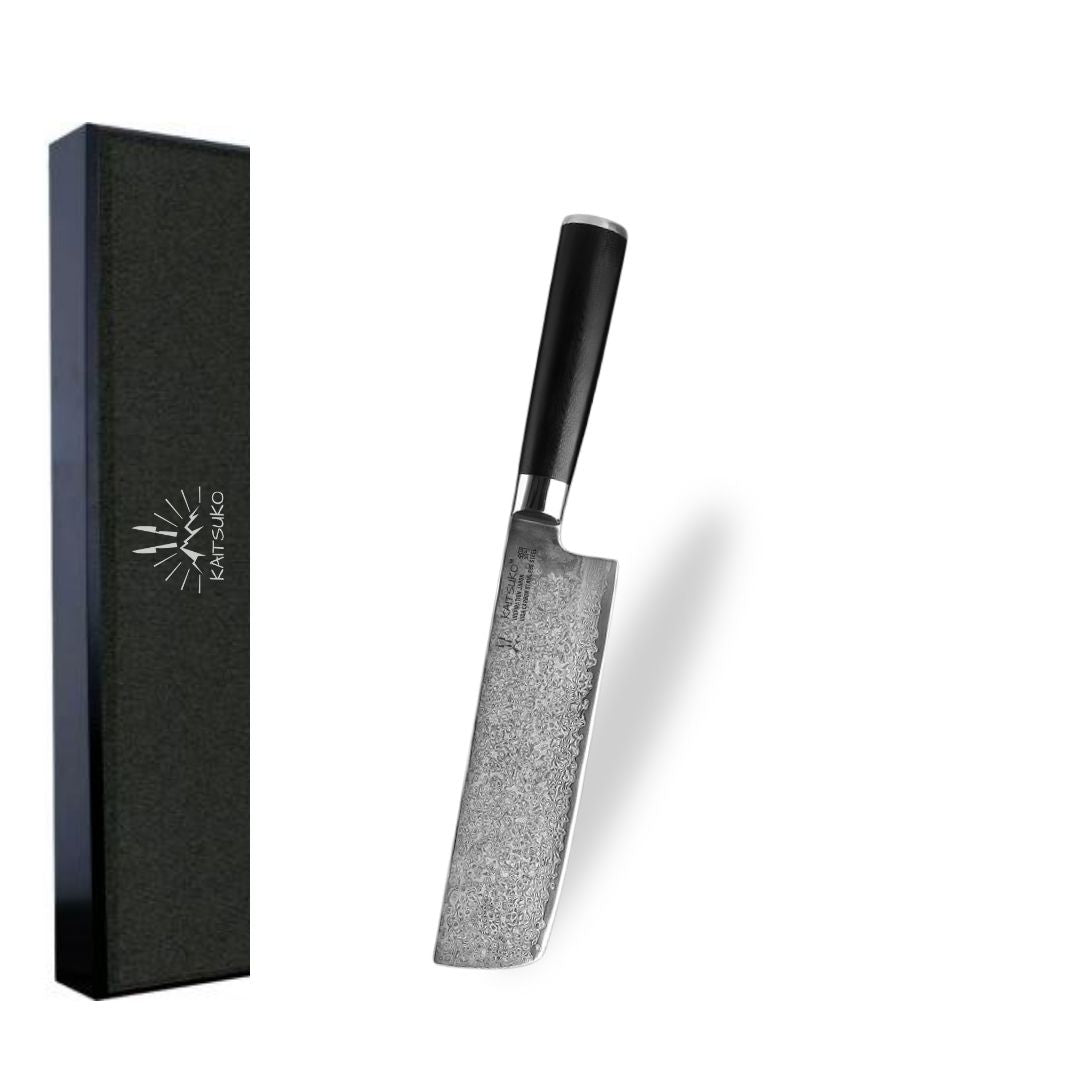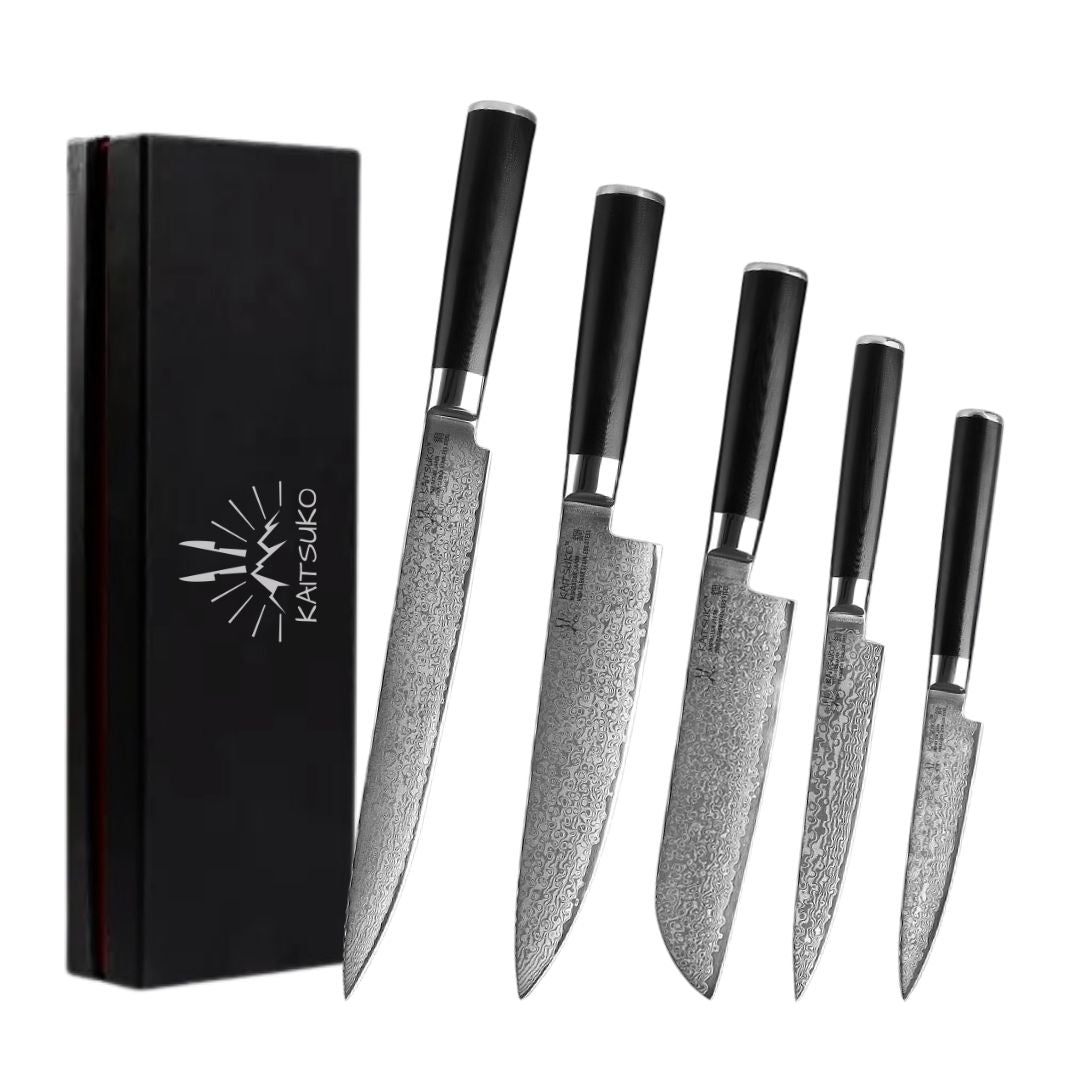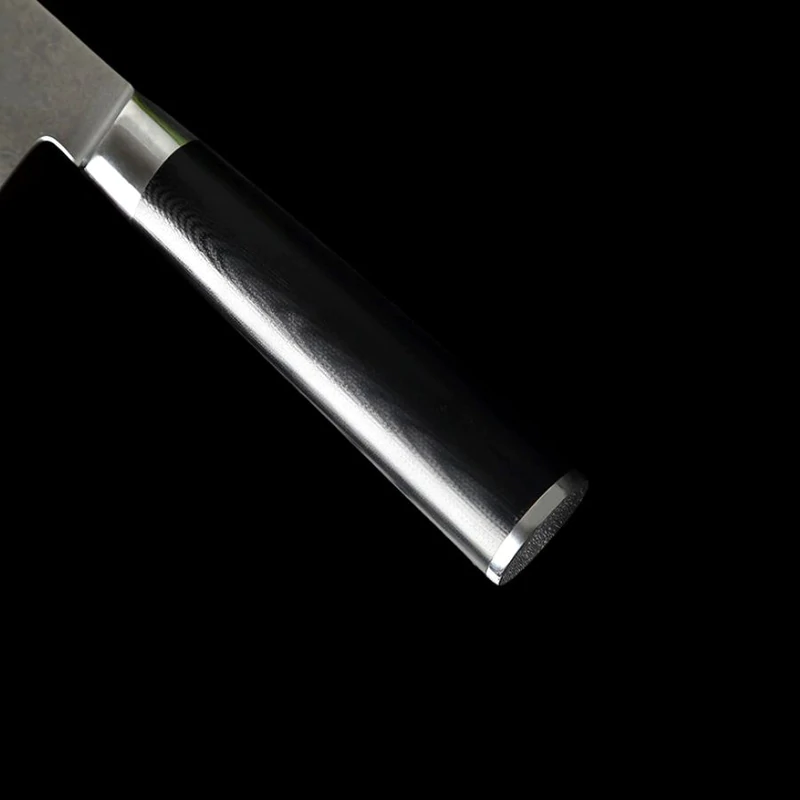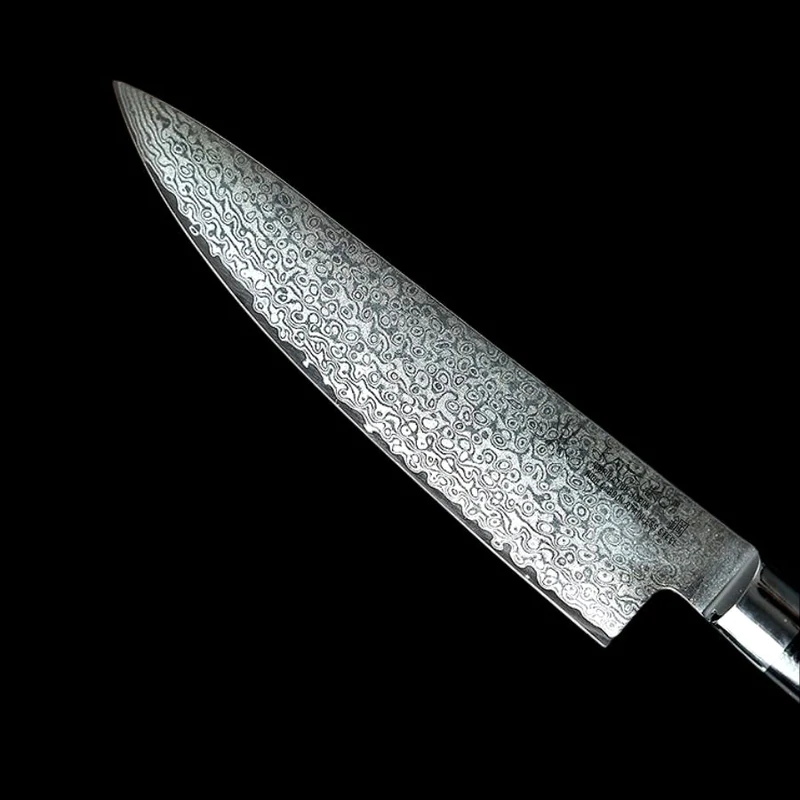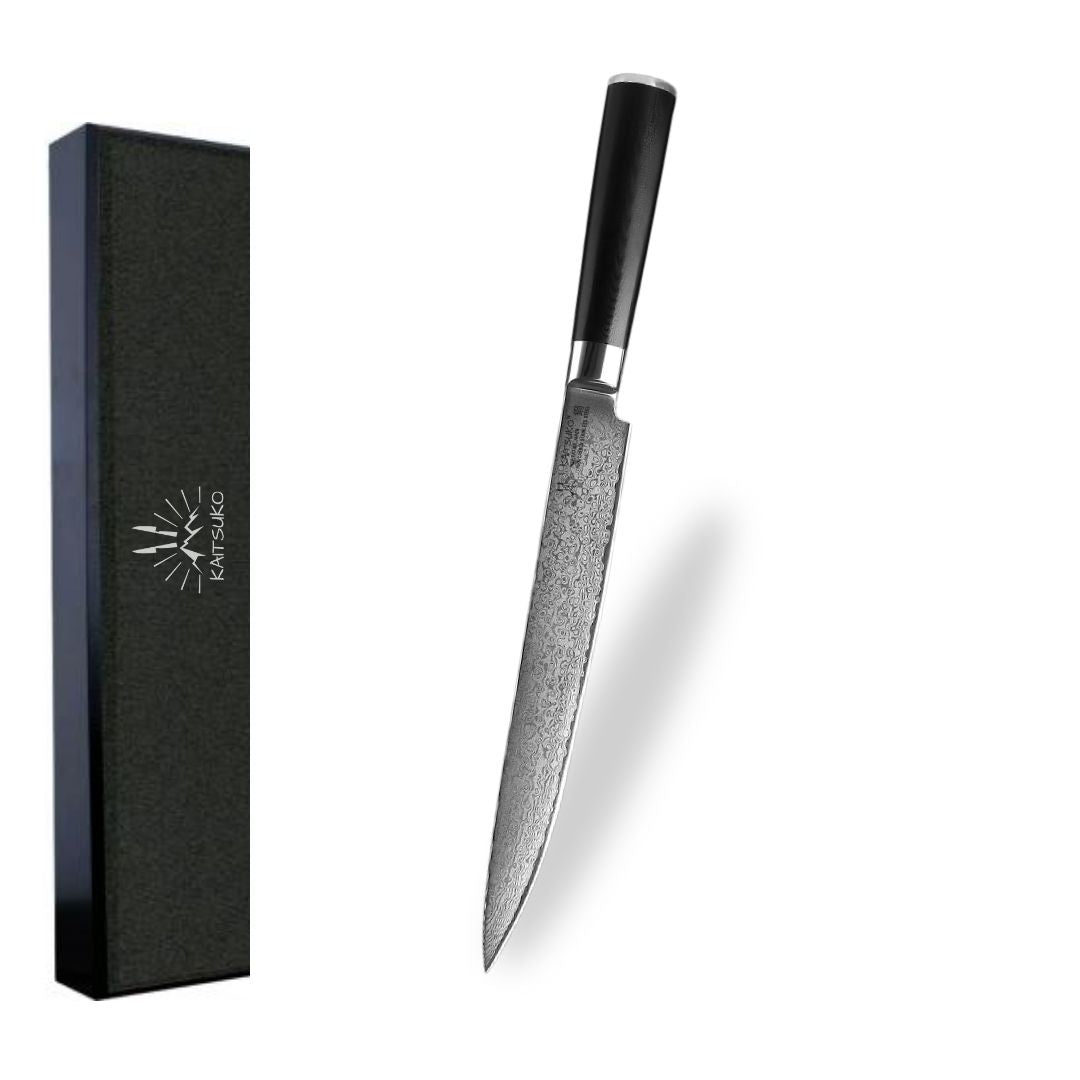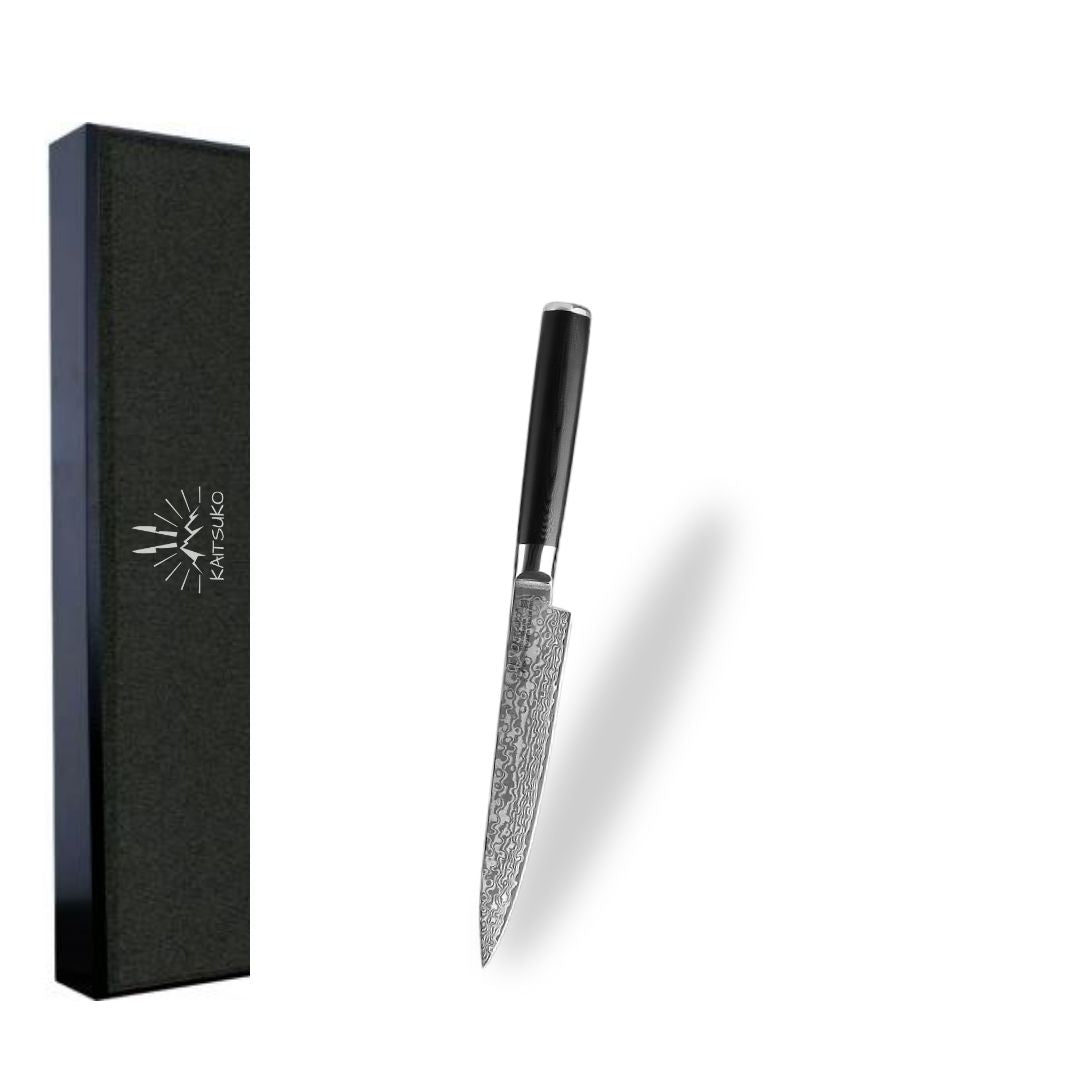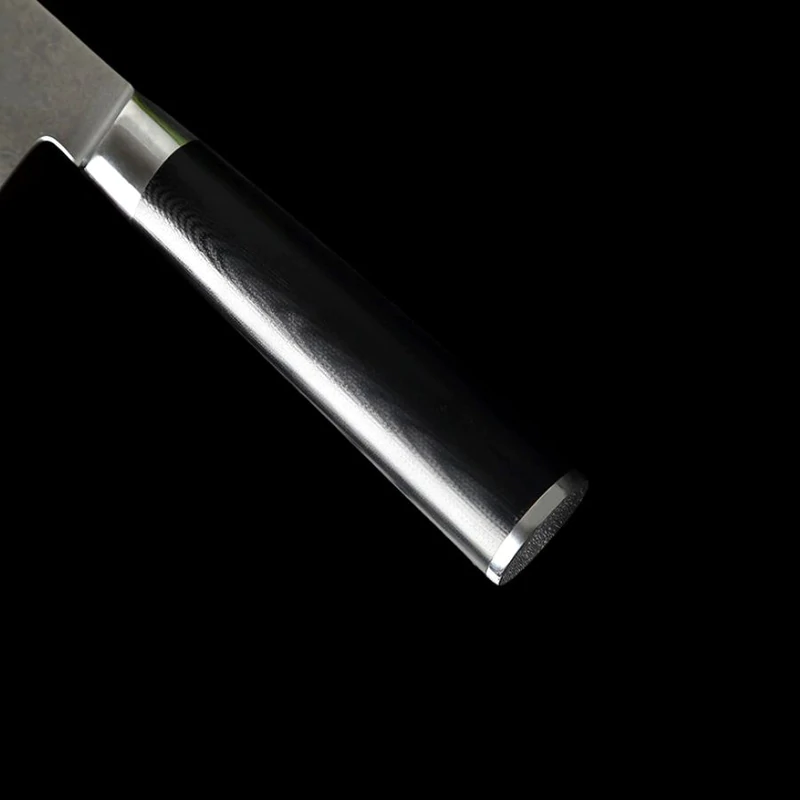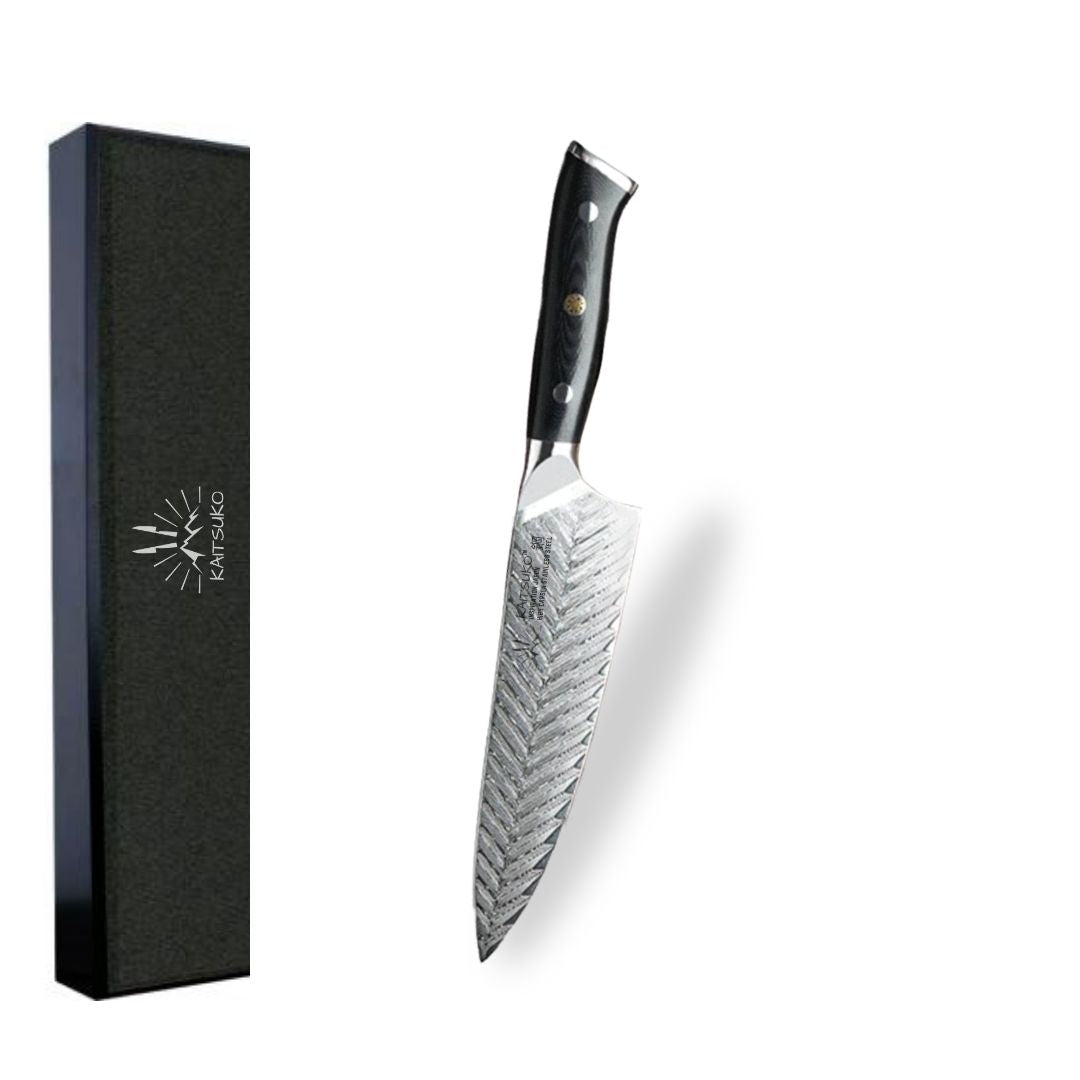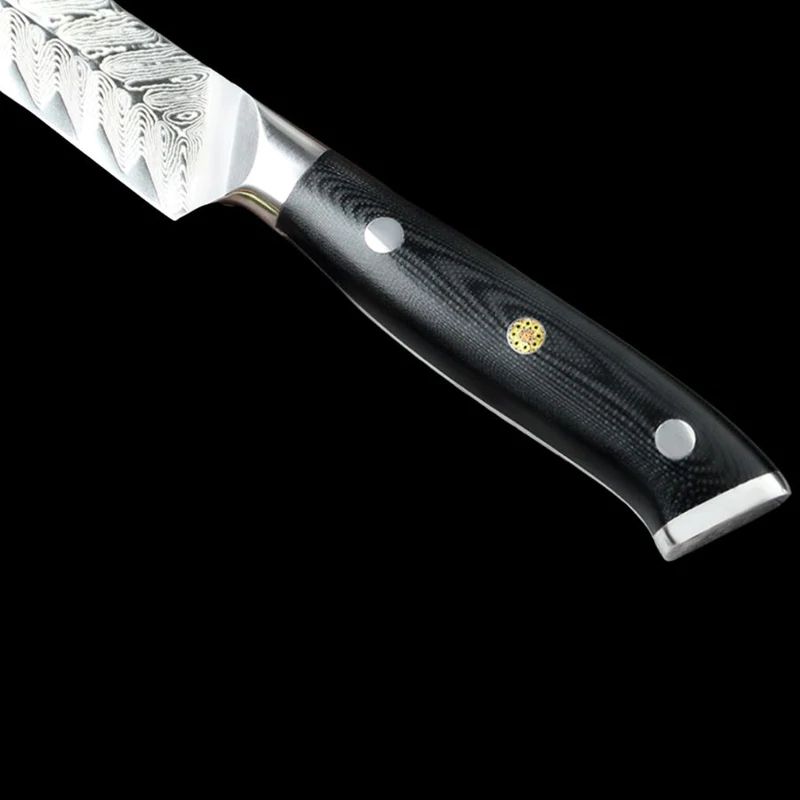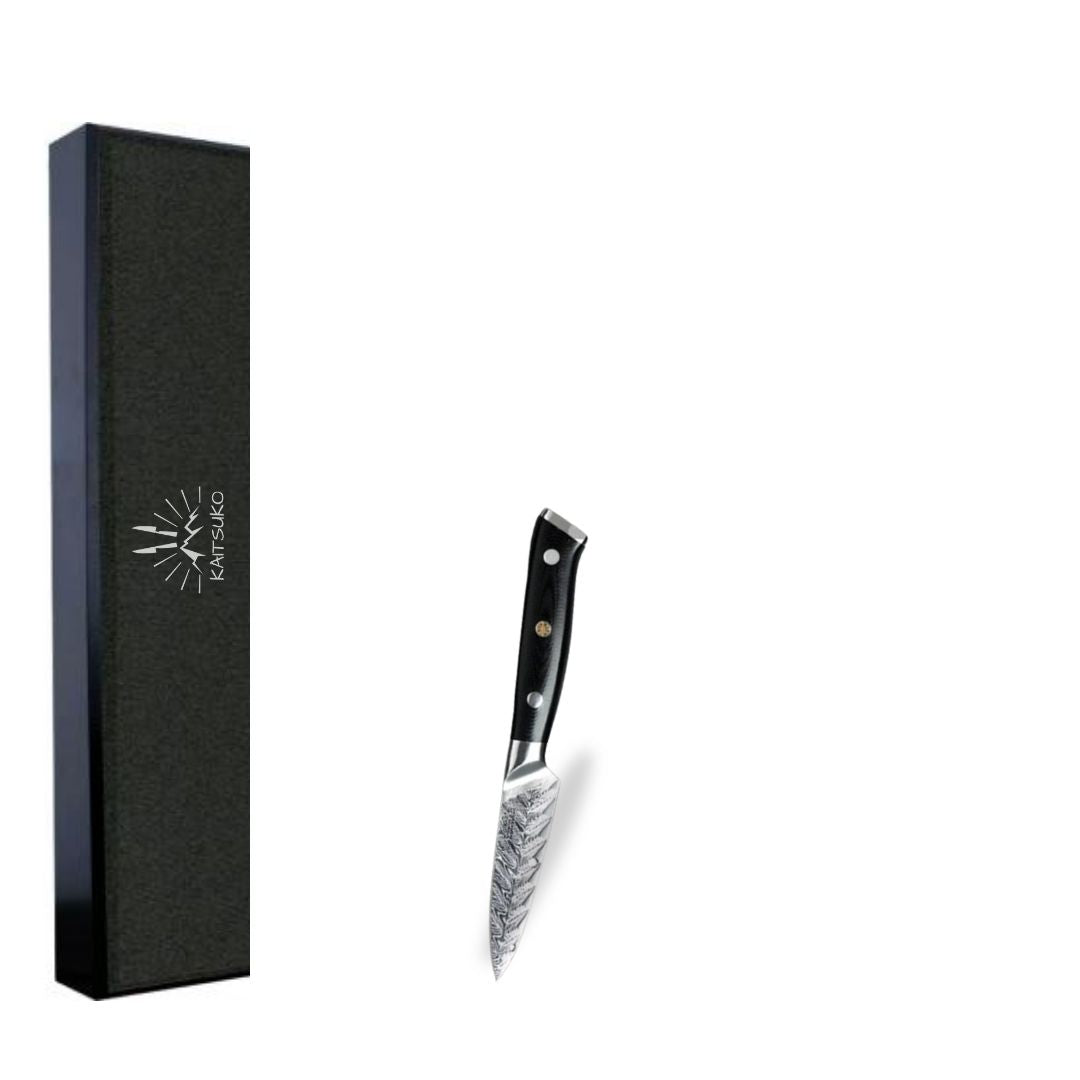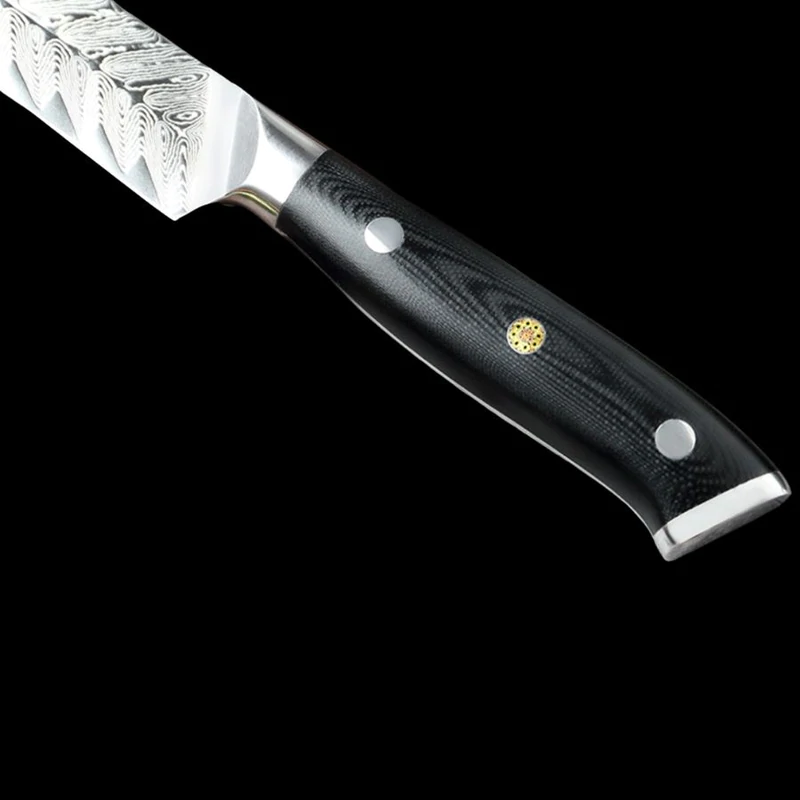Discover Damascus knives, kitchen utensils crafted from robust, sharp and precise materials. In the kitchen, Damascus knives are recognized for their efficiency, thanks to their different layers of superimposed steels, hot-welded and hammered.
Advantages, maintenance, artisanal craftsmanship... Everything you need to know about Damascus knives and Kaitsuko excellence.
What is a Damascus knife?
Damascus Knife: origins and unique manufacturing processes.
The origin of the name and Damascus blade
Damascus knives take their name from Damascus steel, an emblematic and popular material in the world of kitchen cutlery. They also refer to an original manufacturing process, using several layers of steel folded and welded together: hard steel for sharpness, softer steel for flexibility.
The Damascus blade stands out for its robustness, durability and flexibility. It is solid and offers unmatched sharpness.
Why is its appearance so unique?
In addition to its exceptional performance, the Damascus blade is distinguished by its forging methods, which shape unique patterns: waves, scrolls, undulating forms... These artistic elements combine tradition and innovation, for blades comparable to works of art, as creative as they are technical.
The advantages of a Damascus knife in the kitchen
Damascus knives are widely used in cooking, especially in traditional Japanese cuisine. They are appreciated as much for their performance as for their design.
Durable sharpness and robust blade
The Damascus blade manufacturing process creates robust knives, resistant to breakage, and recognized for maintaining their exceptional sharpness use after use.
The blade structure absorbs shocks, preventing any cracking, as well as resistance to corrosion and rust.
The Damascus knife is the perfect balance between performance and aesthetics: an art object synonymous with excellence.
What uses are they best suited for?
Damascus knives can be used for both daily and professional use. They offer clean and precise cutting without effort or need for special technique. All flavors and textures of food are preserved.
Versatile, the Damascus knife allows you to slice meats, vegetables, or fish with ease and fluidity.
It's a knife with a high-end blade, prized for all uses, and enhancing every gesture in the kitchen.
How to maintain a Damascus knife?
Like any high-performing object, the Damascus knife requires rigorous maintenance to last over time. The blade must be sharpened correctly, with appropriate equipment.
Cleaning and storage
Cleaning must be done by hand with soapy water, never in the dishwasher. After rinsing, the blade must be wiped with a dry cloth to maintain its efficiency and quality.
It's important to thoroughly dry the entire knife before storing it, to avoid moisture residue and corrosion.
With a Damascus knife, certain practices should be favored, such as using a wooden cutting board, or regular sharpening.
Sharpening: what should you know?
Damascus blades don't stay sharp for life. To maintain their exceptional sharpness, it's important to sharpen them regularly, as soon as cutting becomes less clean.
There are several types of sharpening stones for Damascus knives:
- Natural stones: not well-suited for beginners
- Synthetic stones: homogeneous and predictable, suitable for all levels
- Diamond stones: for very quick and simple sharpening
Choosing the right sharpening stone is essential: it depends on the knife type, the cook's experience level, or the desired objective (maintenance, sharpening, finishing...).
For quick, easy, controlled and secure sharpening, it's possible to use a handled sharpening stone. This allows precise and stable manual sharpening, respectful of the blade, thanks to its diamond stone. This traditional method guarantees preserving the blade's architecture, polishing, refining and enhancing the steel for longer-performing blades.
Our Damascus knives available at Kaitsuko
Kaitsuko knives: the fusion between Japanese tradition and contemporary design.
Artisanal craftsmanship in service of performance
At Kaitsuko, each knife is designed to guarantee exceptional, precise and durable cutting, suitable for professionals and cooking enthusiasts.
The designs are unique: hammered patterns and elegant wooden handles, for ergonomic, stable and comfortable grip and use.
Kaitsuko highlights the art of traditional Japanese cutting, ideal for slicing meats and fish, mincing vegetables, cutting fruits or cutting and chopping fine herbs.
Discover our flagship models
The Kiritsuke Prestige knife collection brings together several Japanese knives suitable for both amateurs and professionals. The VG10 Damascus steel blades guarantee exceptional cutting sharpness and incomparable robustness. The handles are ergonomic and crafted, for secure and comfortable grip.
True art objects, Kiritsuke knives are a perfect balance between cutting quality and design that is both modern and traditional.
Their artistic and unique design makes them an ideal gift for lovers of precise and traditional cooking.
FAQ about Damascus knives
What is a Damascus blade?
A Damascus blade is made from Damascus steel in different layers folded, welded and folded together, a robust material famous for its resistance, flexibility and sharpness.
Where are Damascus knives made?
Generally, Damascus knives are made in Japan, Europe and Asia.
Is Damascus good for a blade?
Damascus uses several hammering and welding techniques to fuse metals. This guarantees a robust blade, resistant to breakage and capable of maintaining exceptional sharpness over time.
Discover our Kaitsuko Japanese knife collection.






